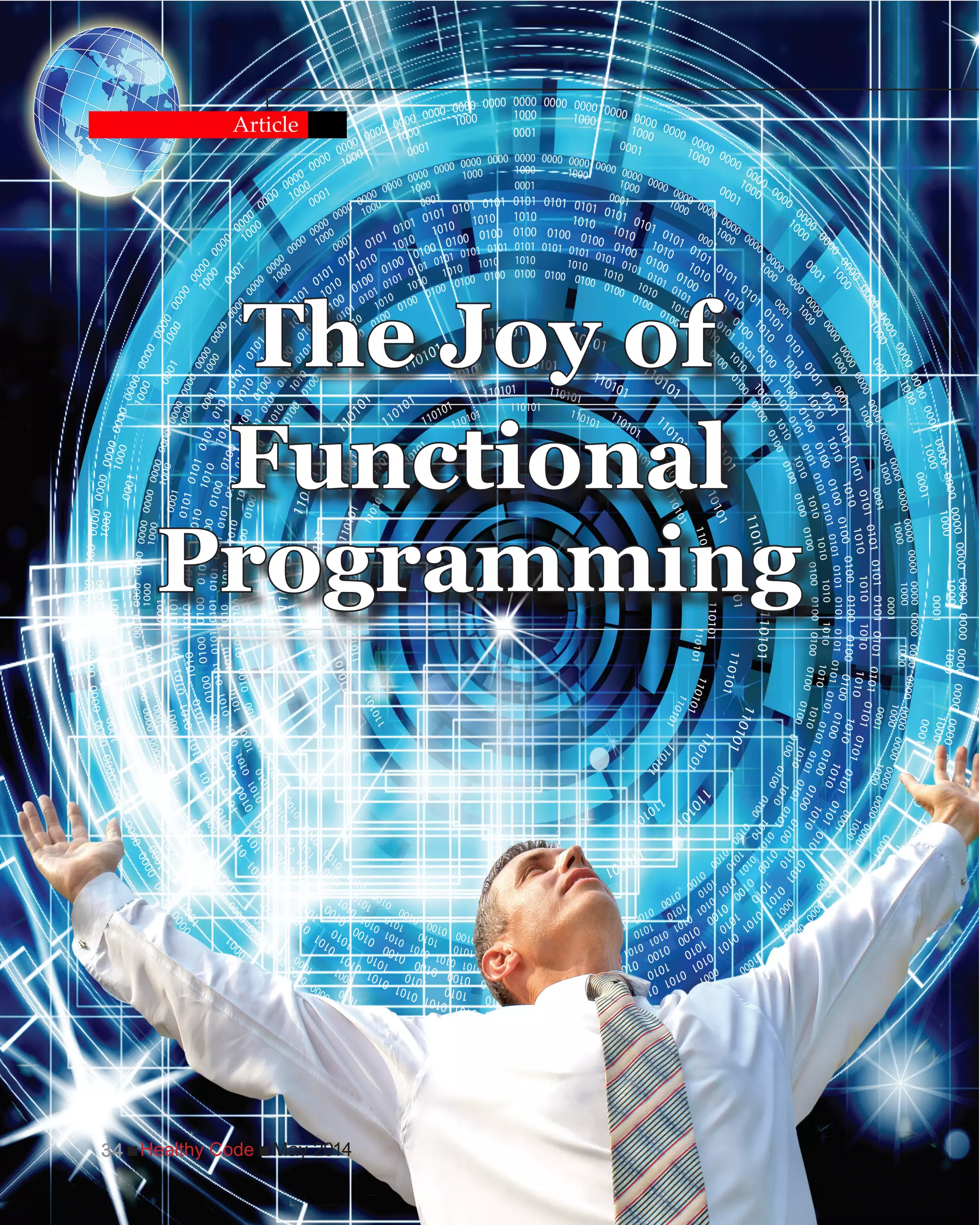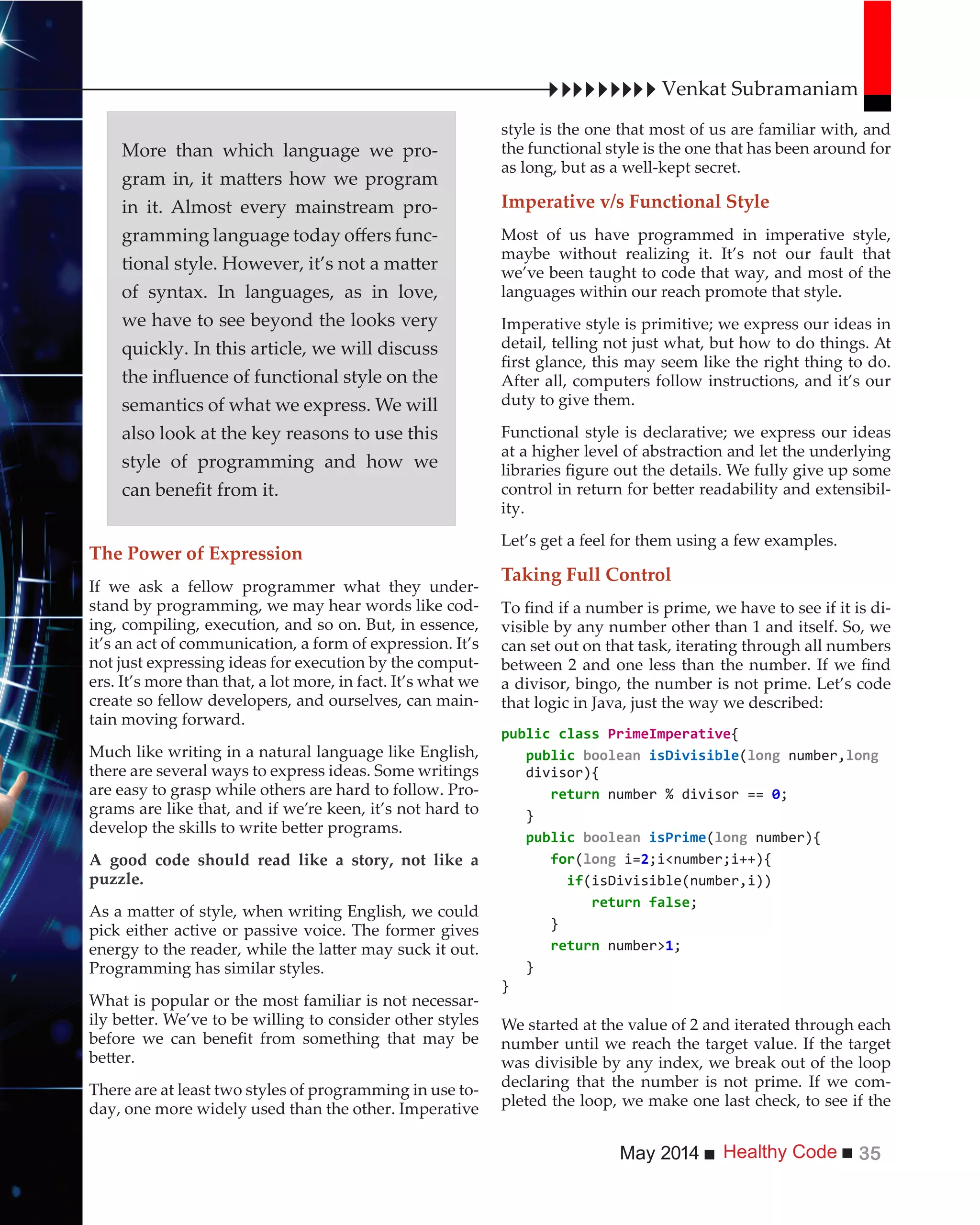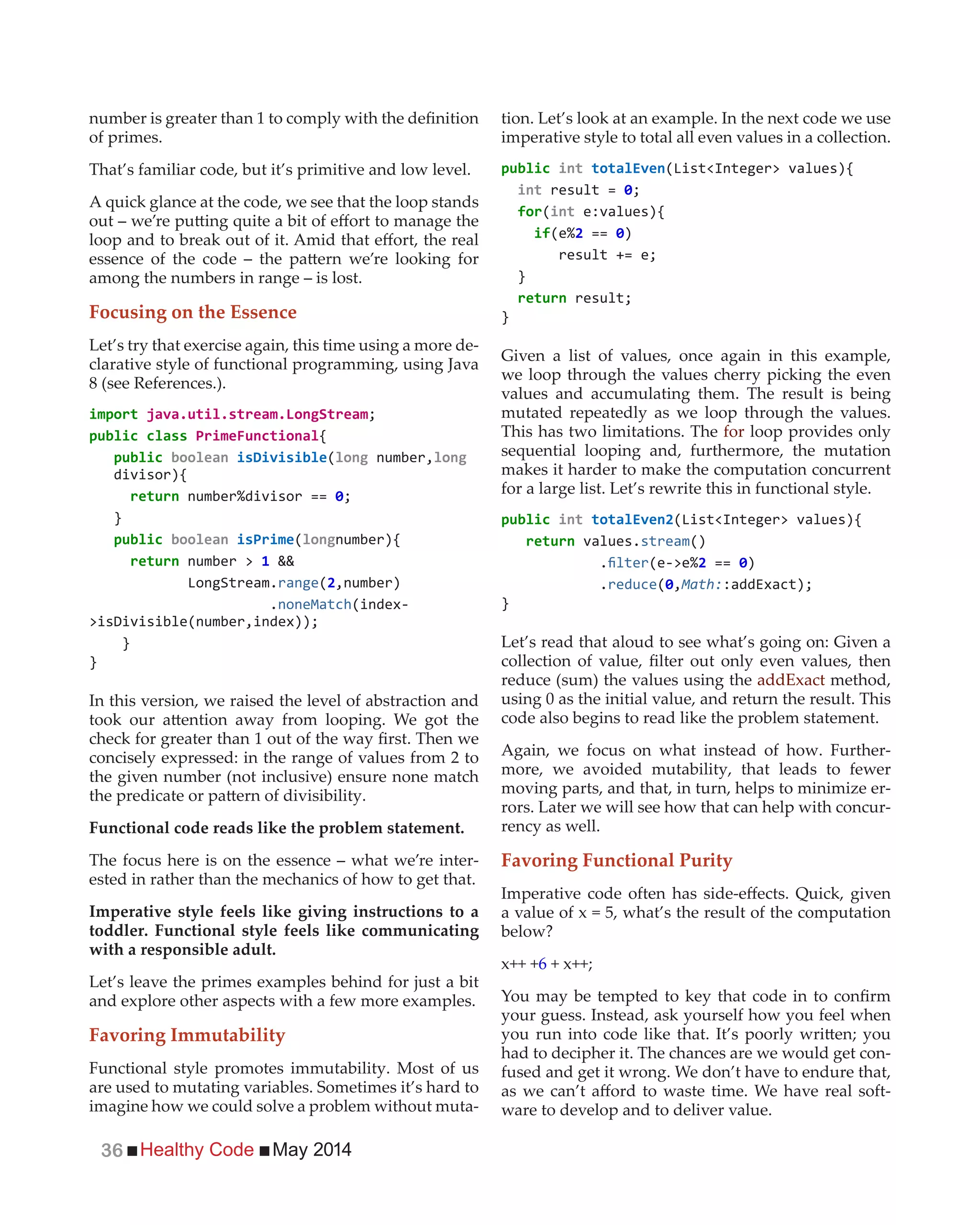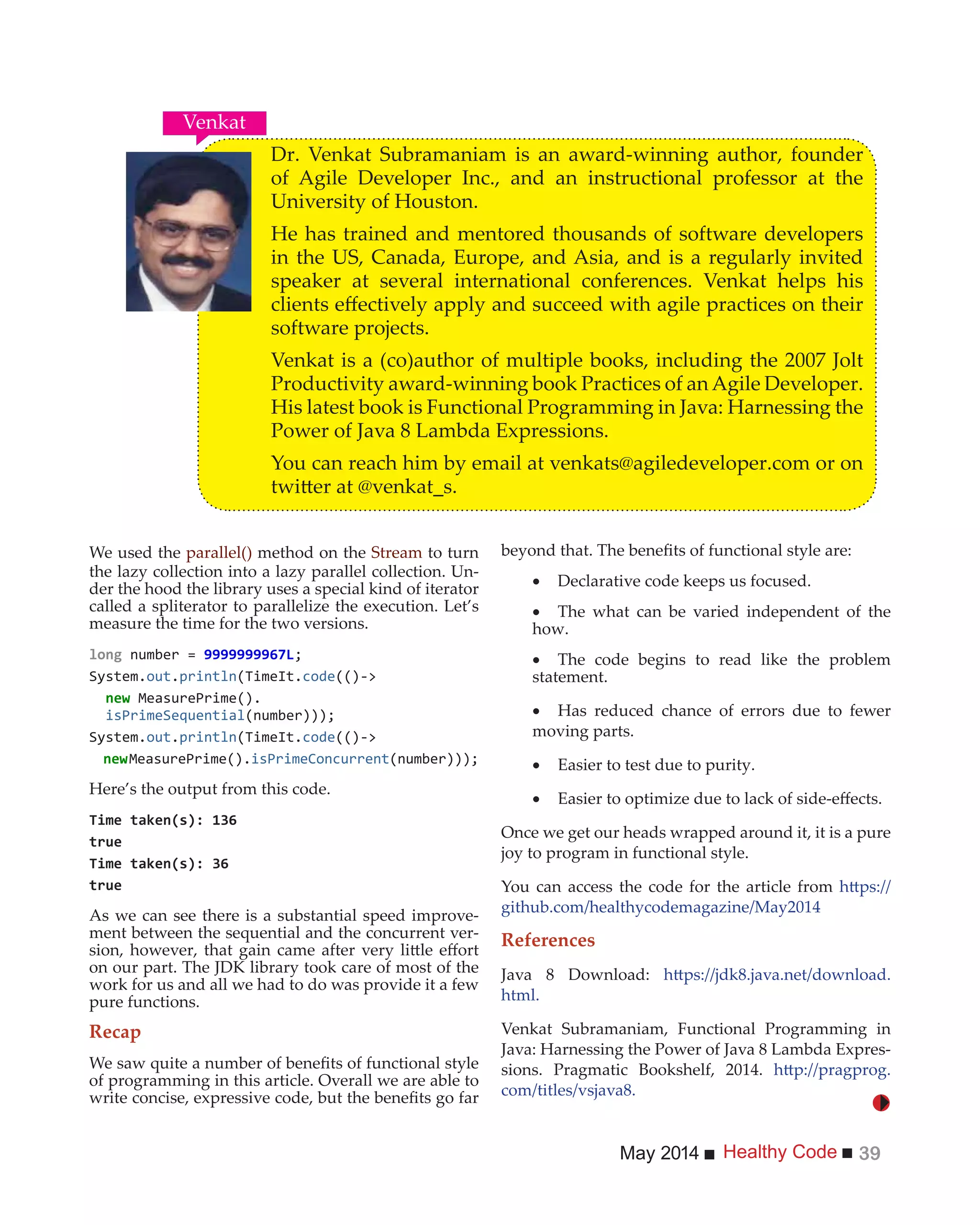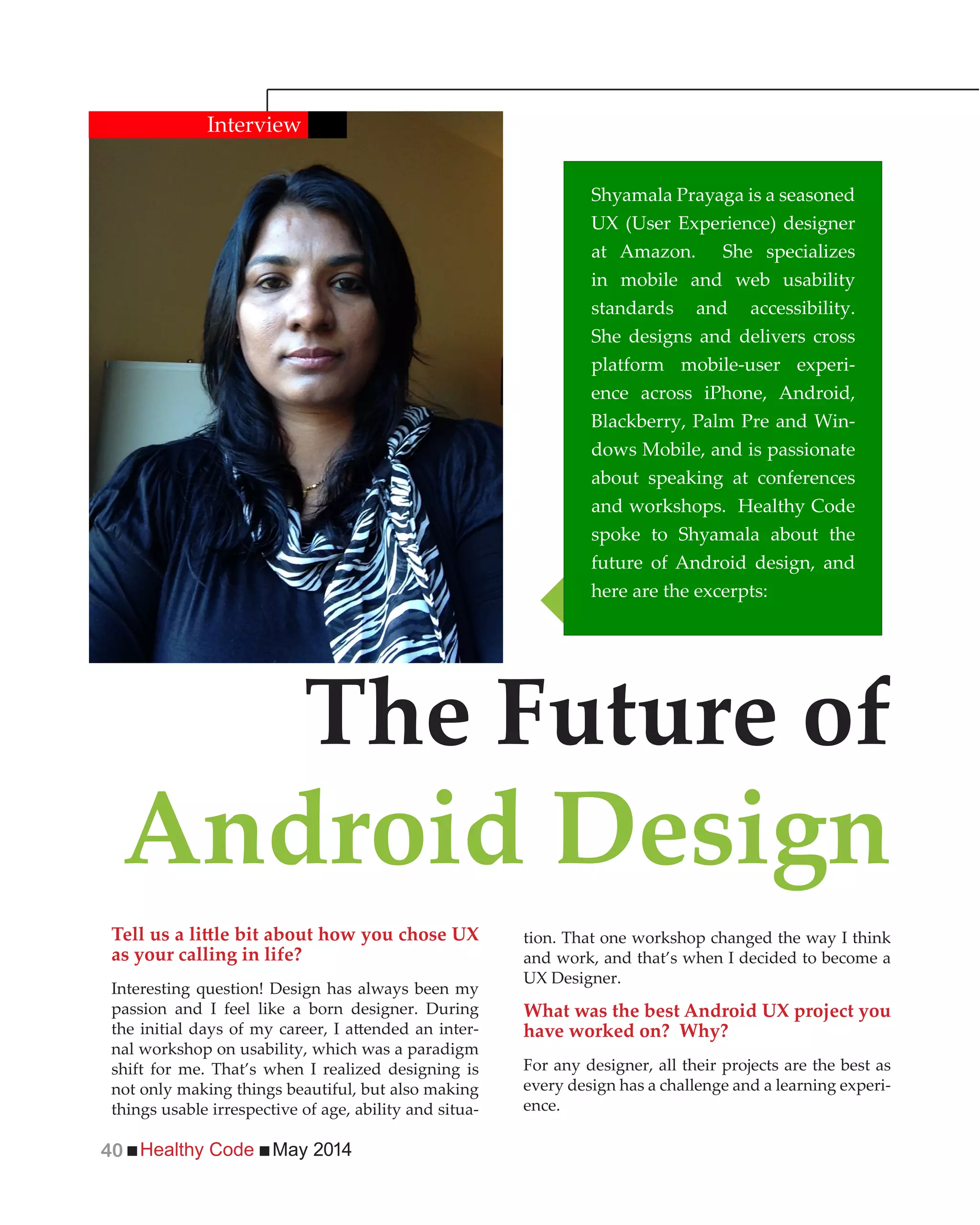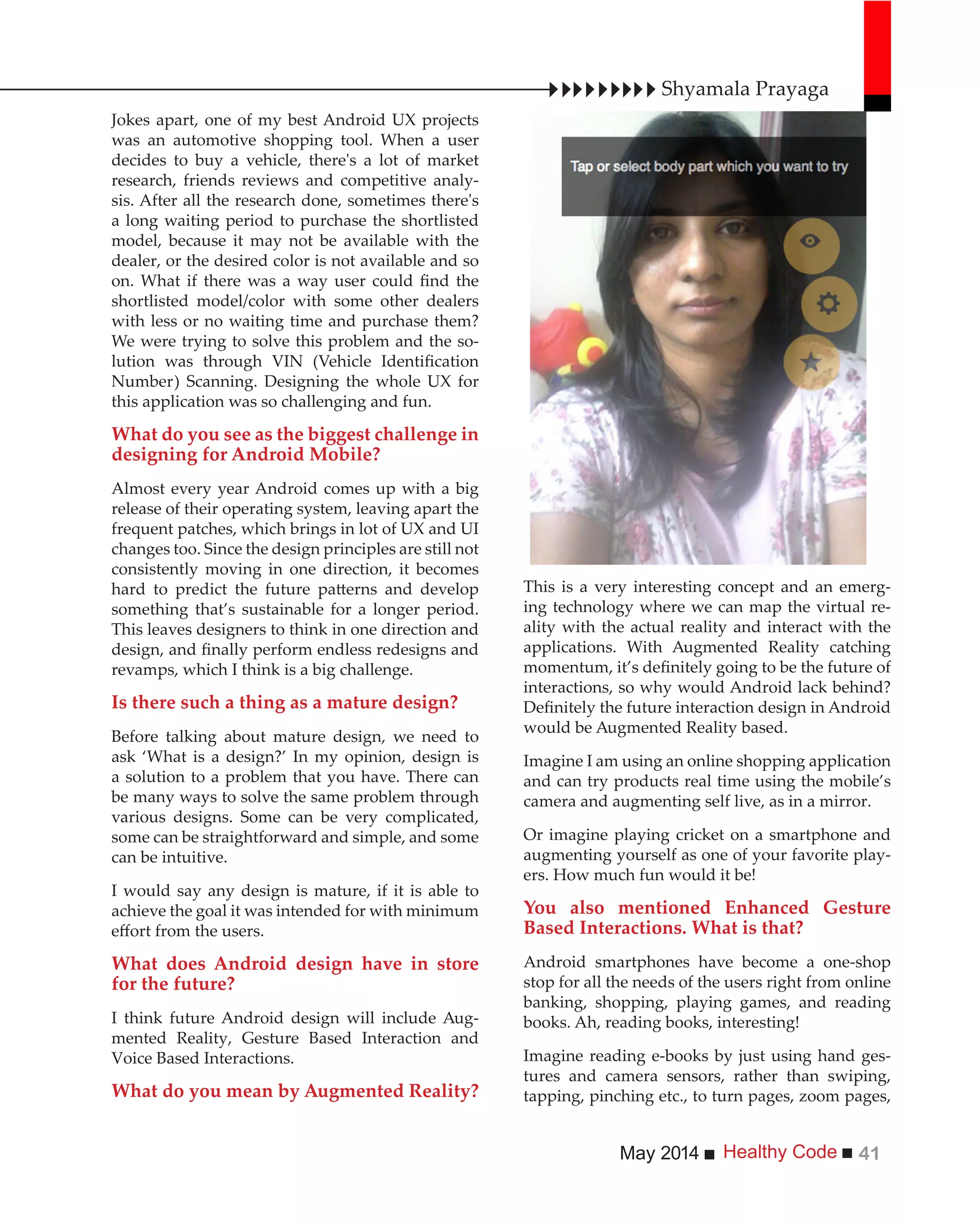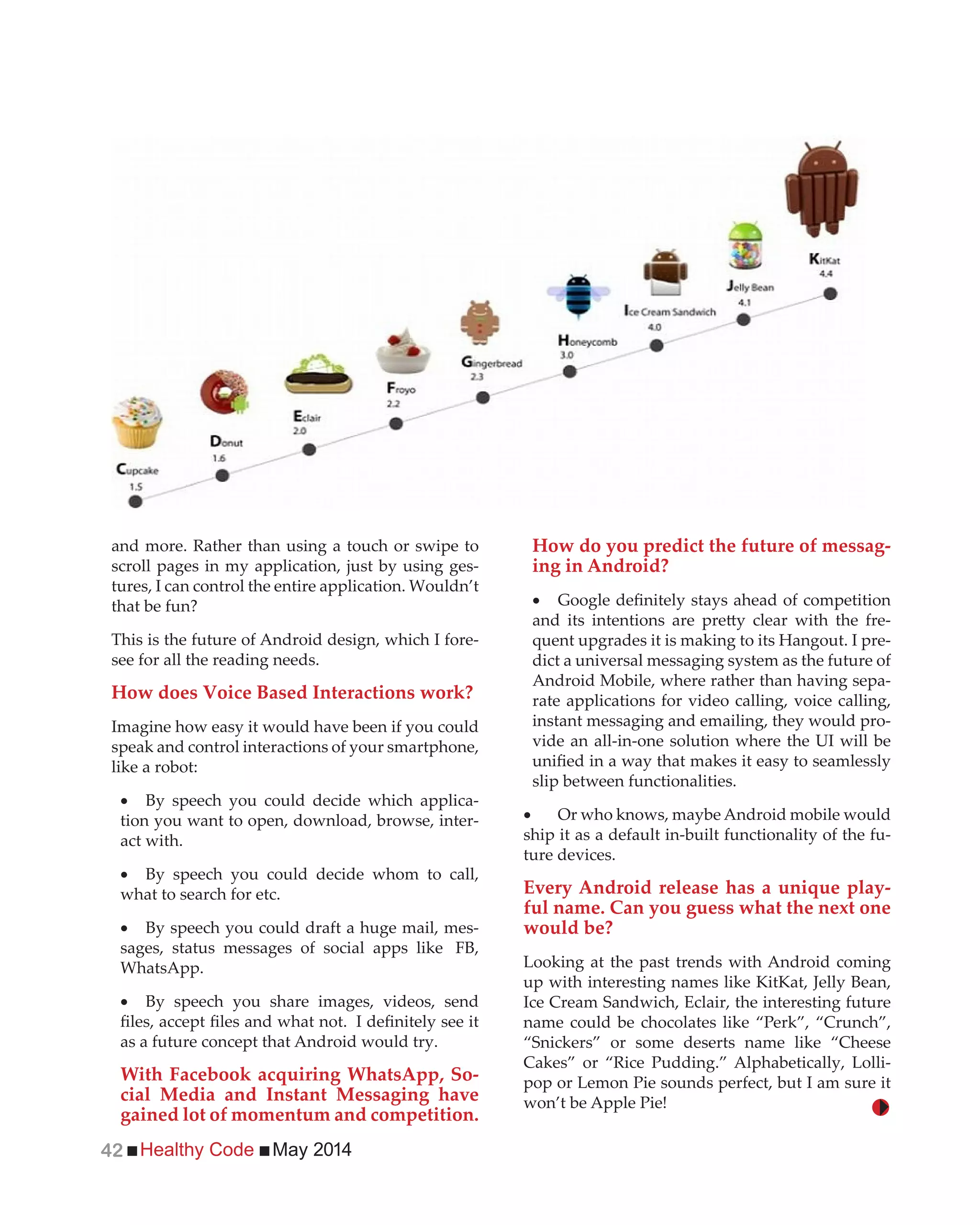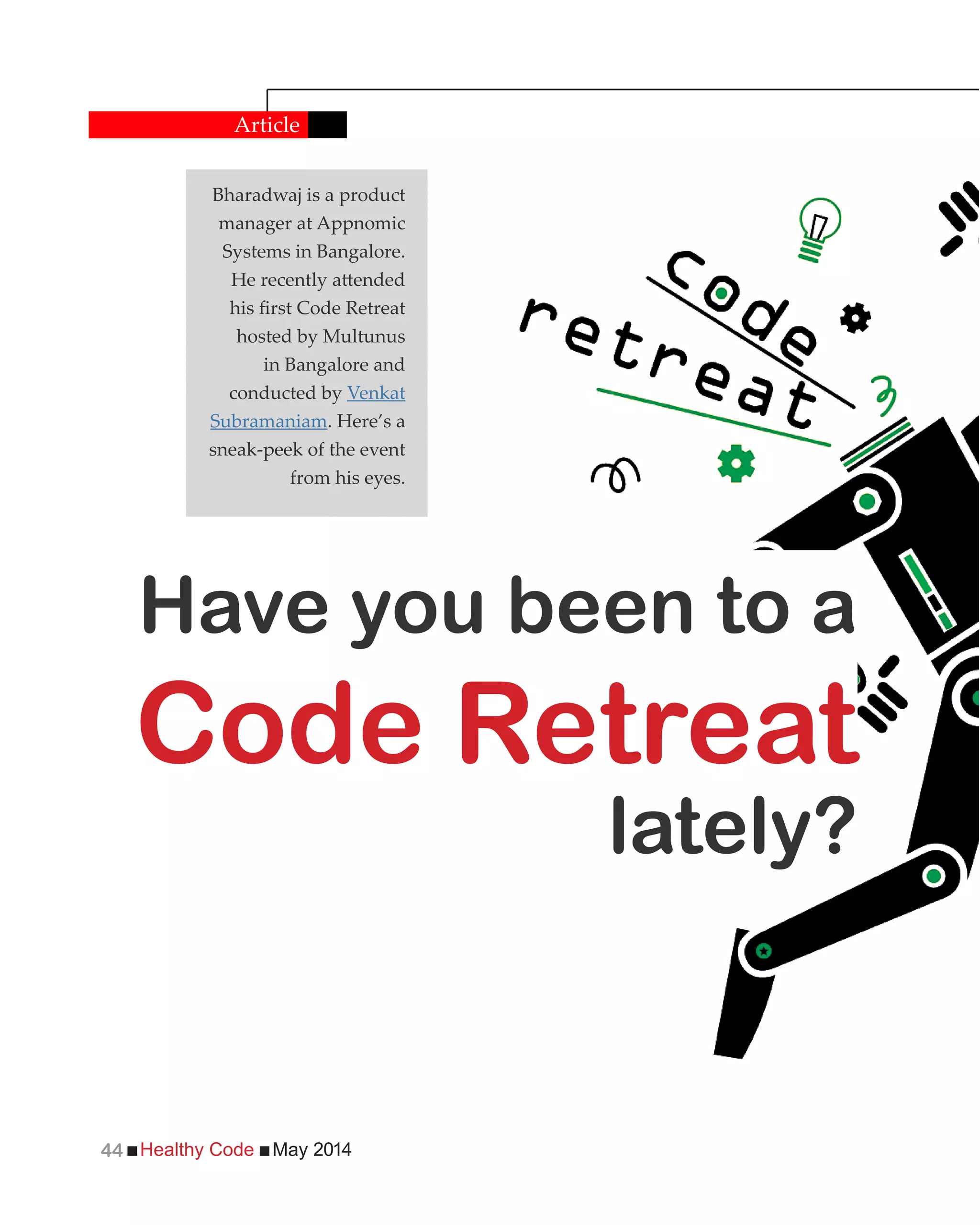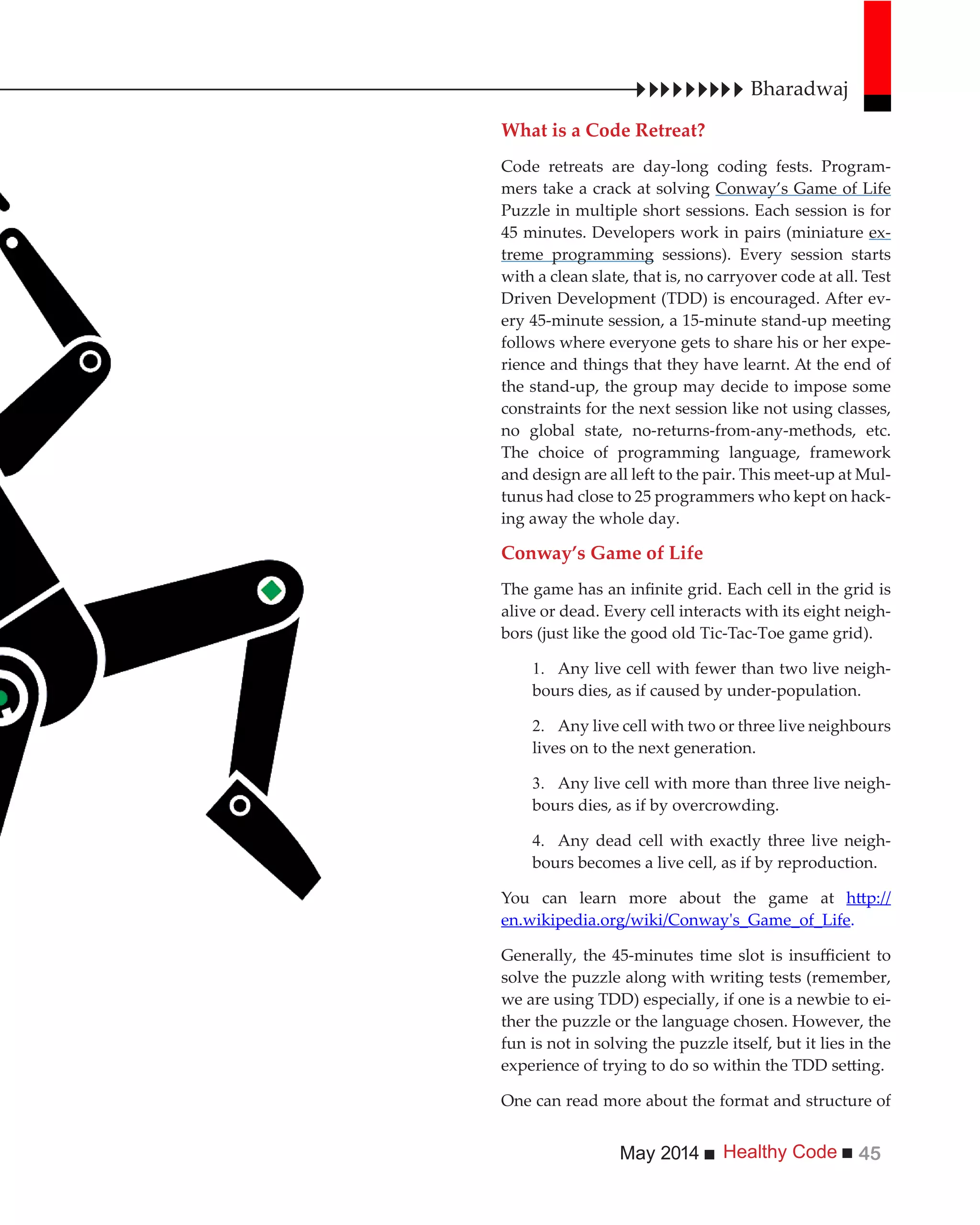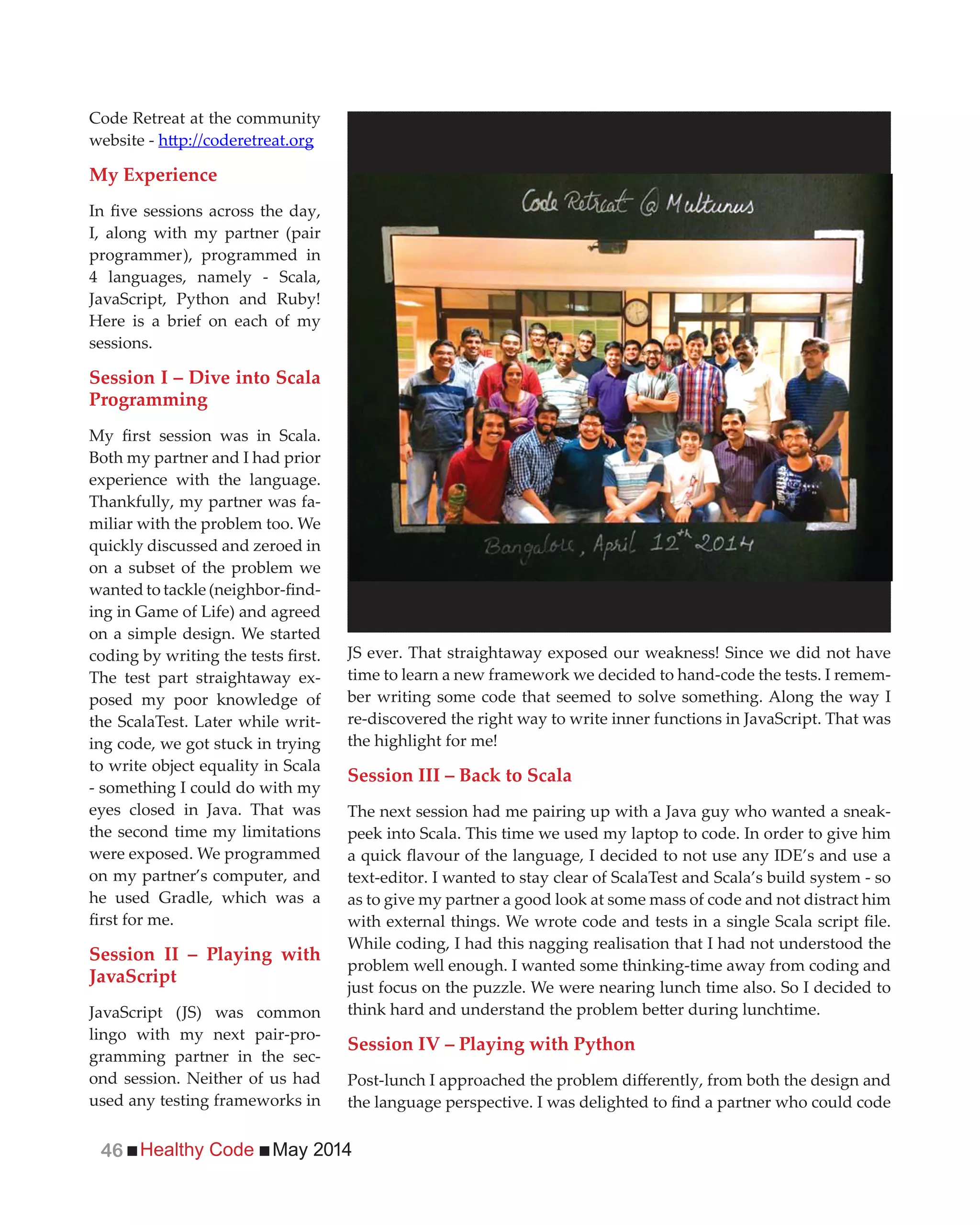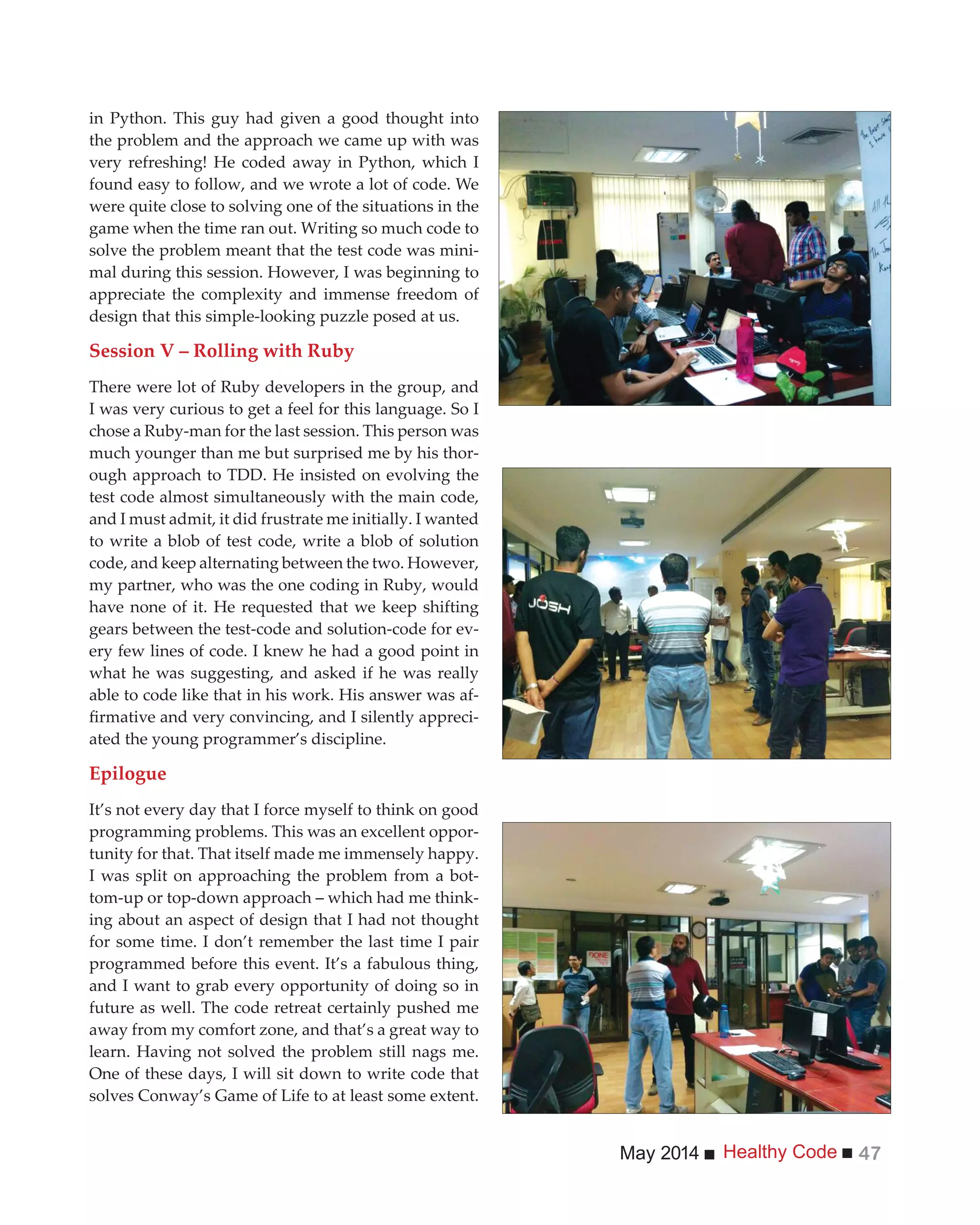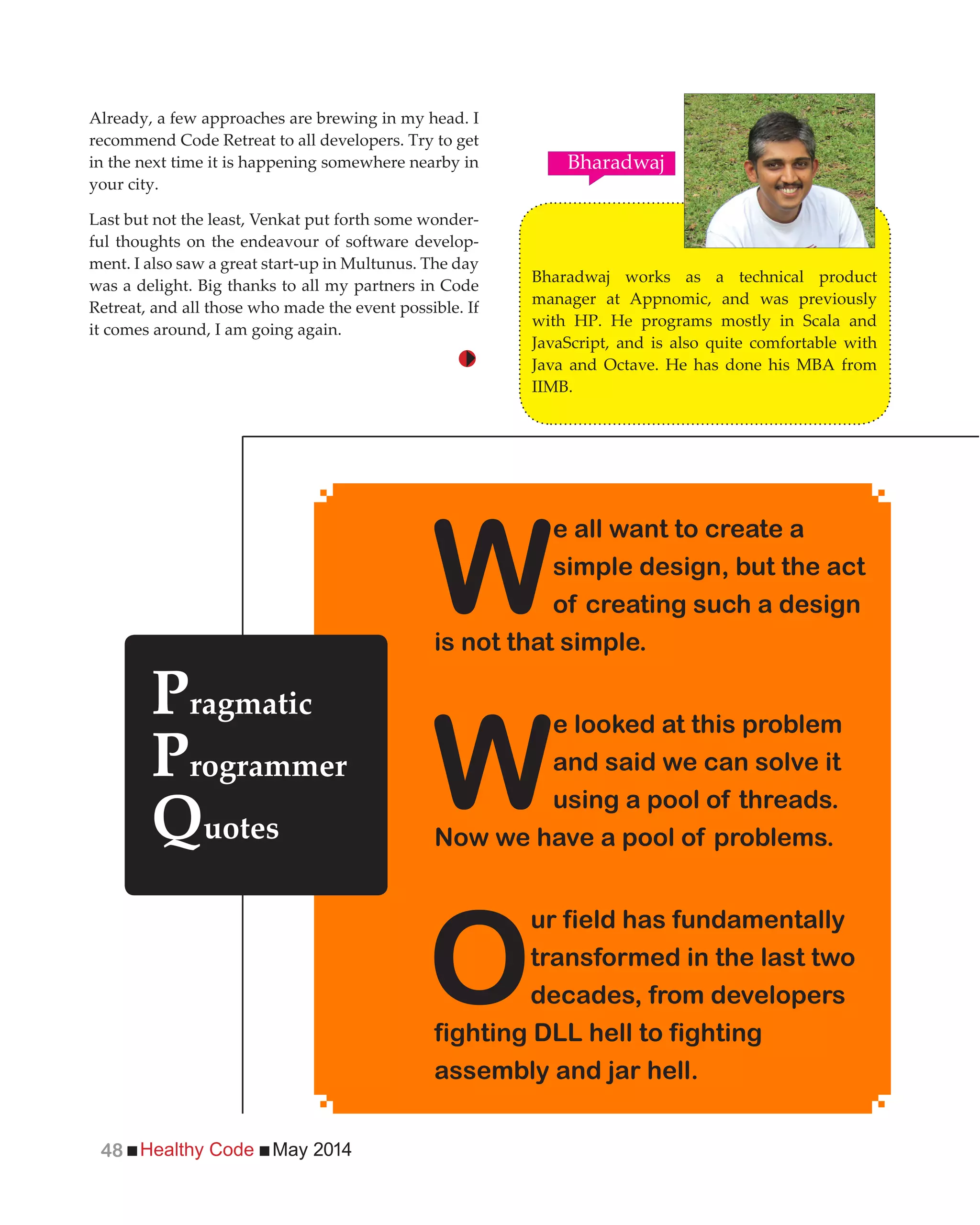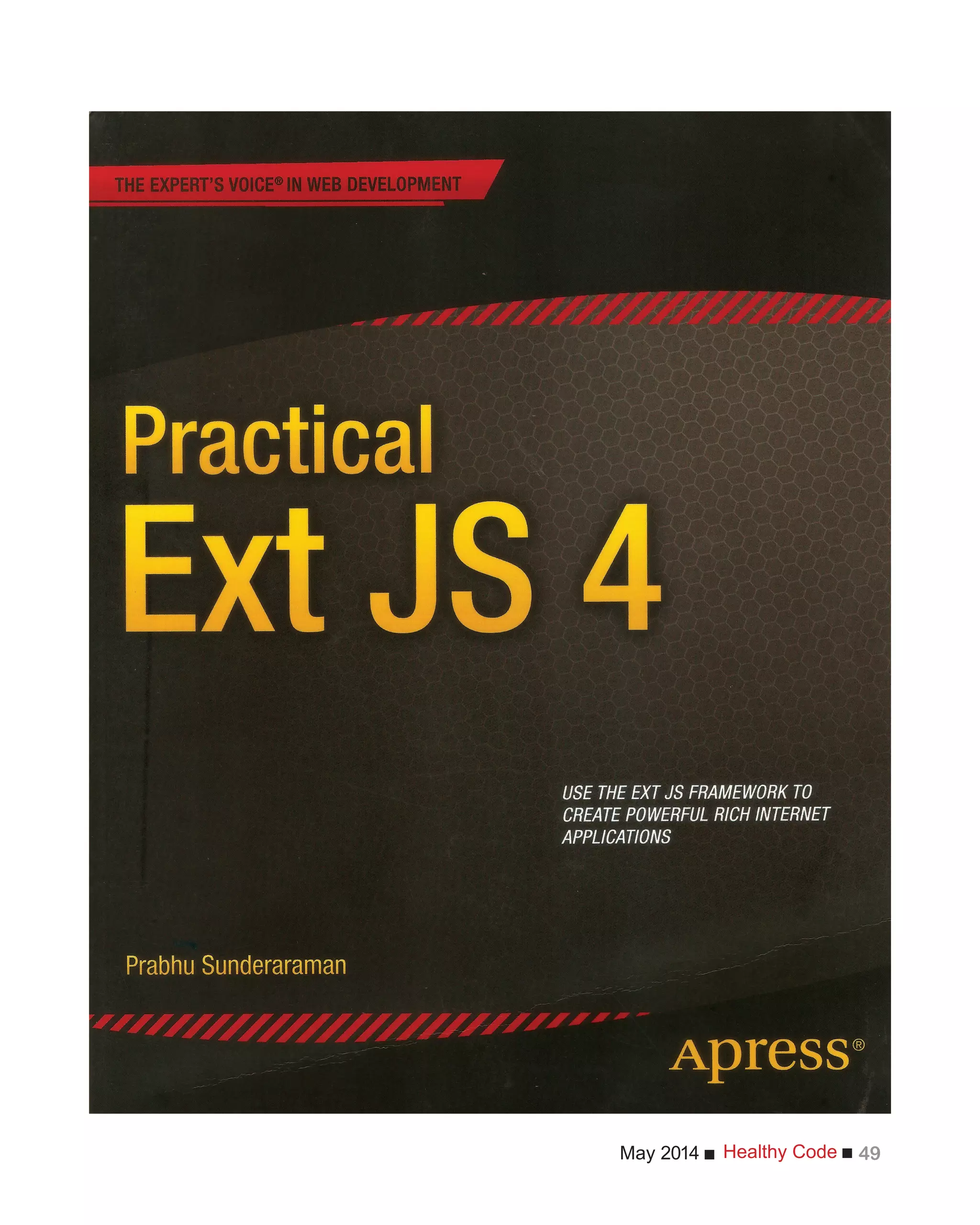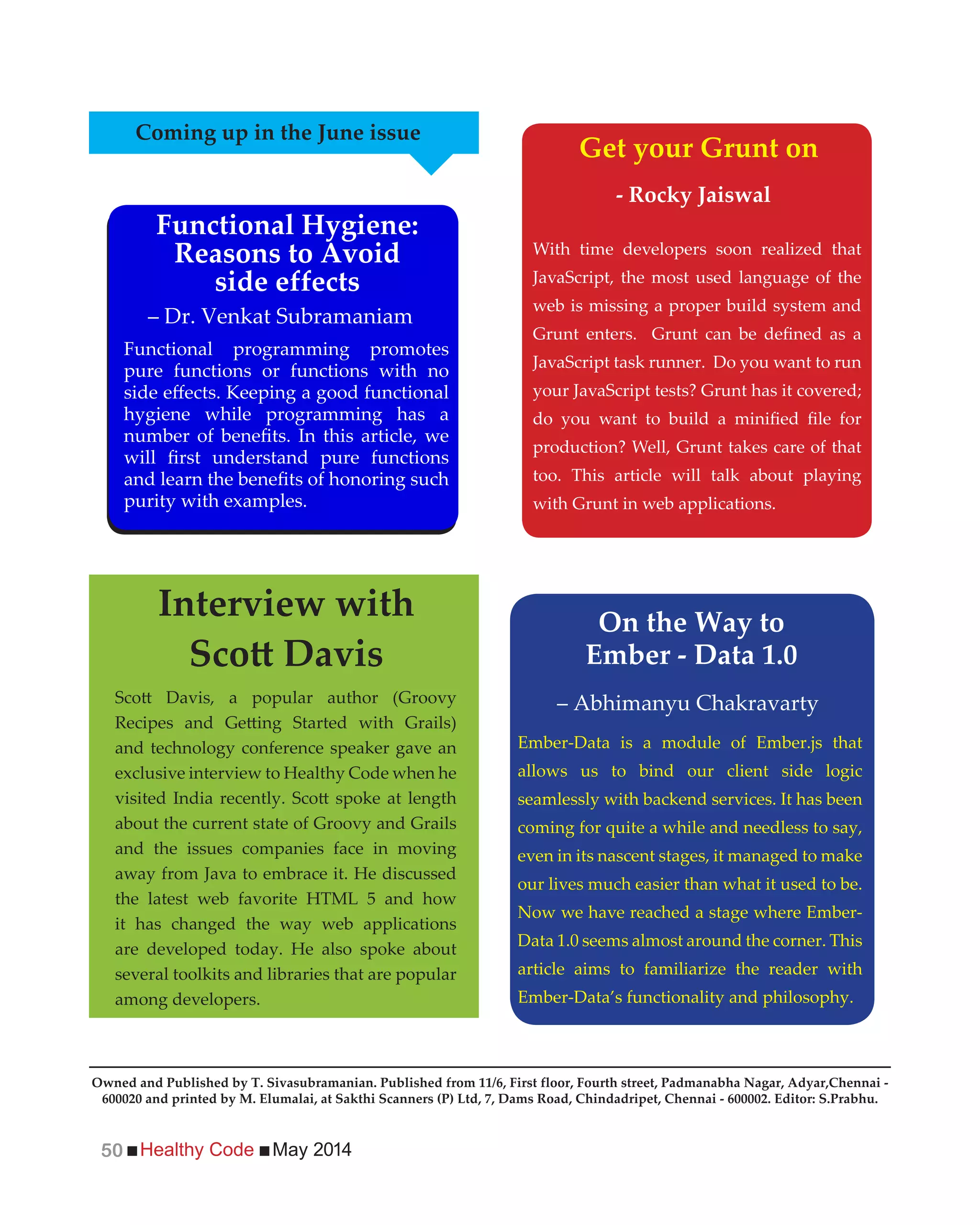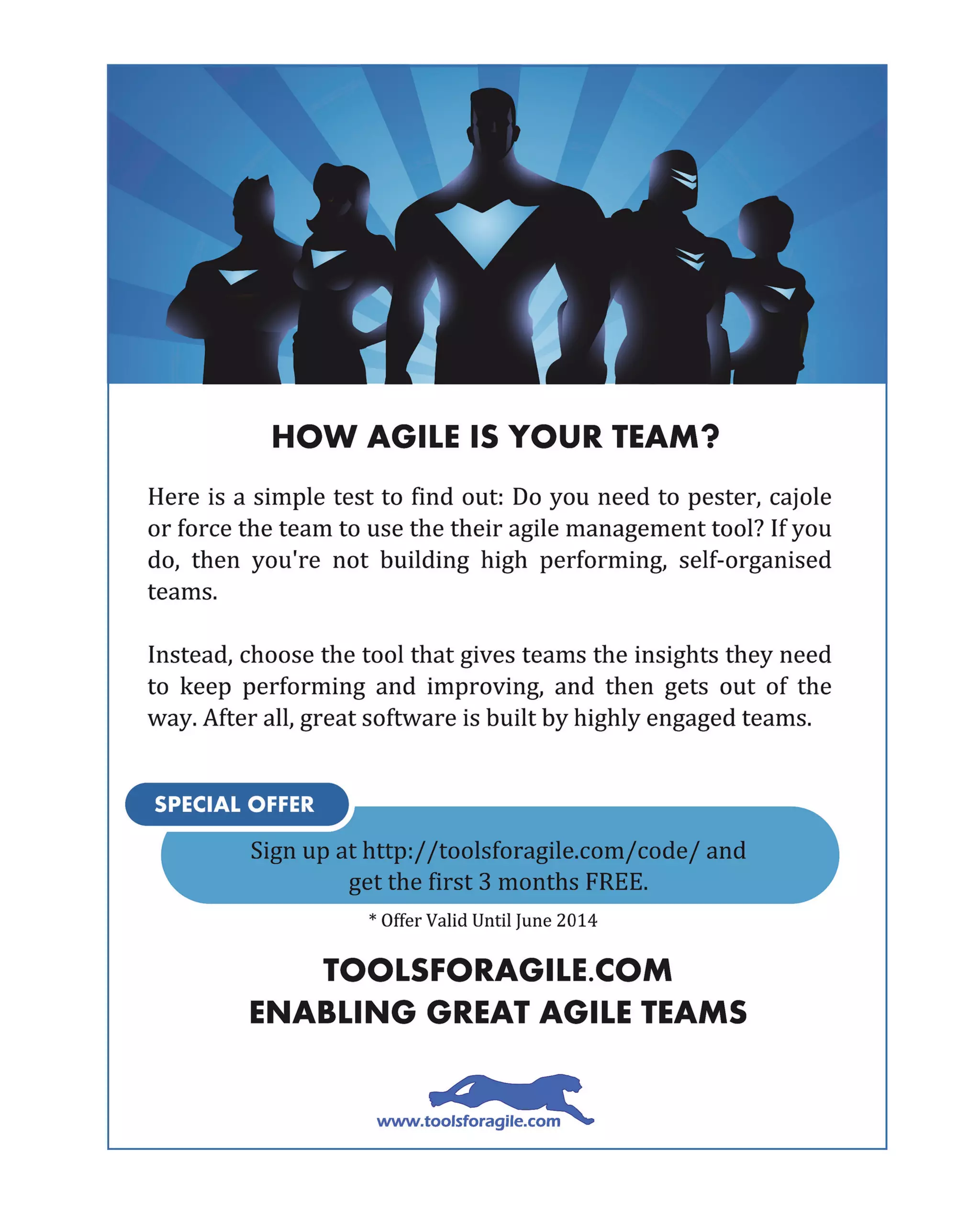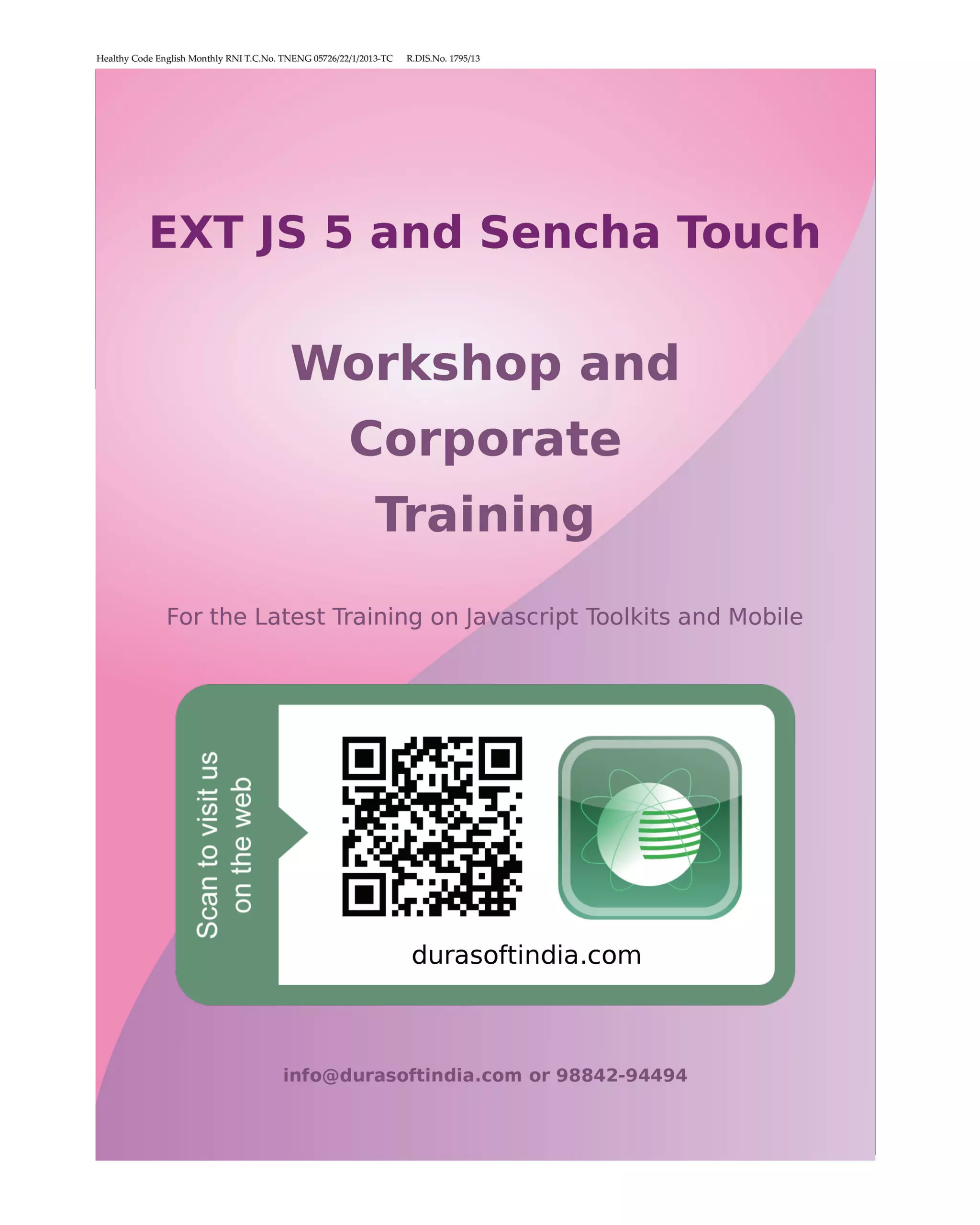The document provides an overview of building a movie review Android application using existing libraries to minimize coding. It discusses integrating ActionBarCompat for the action bar, Retrofit for making API calls to Rotten Tomatoes, Picasso for loading images, and libraries for pull-to-refresh functionality and card UI design. The application allows users to search for movies and see ratings and details.
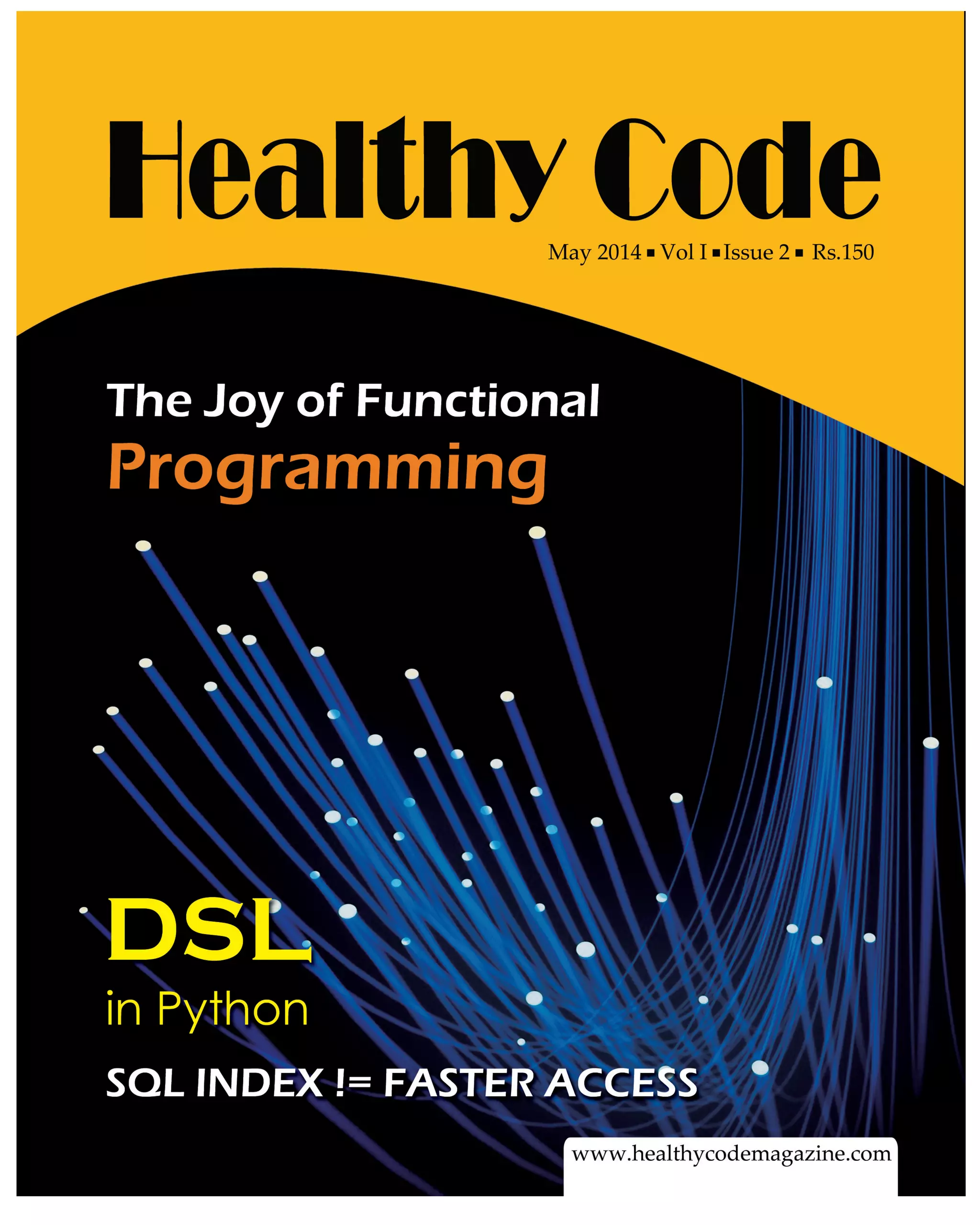
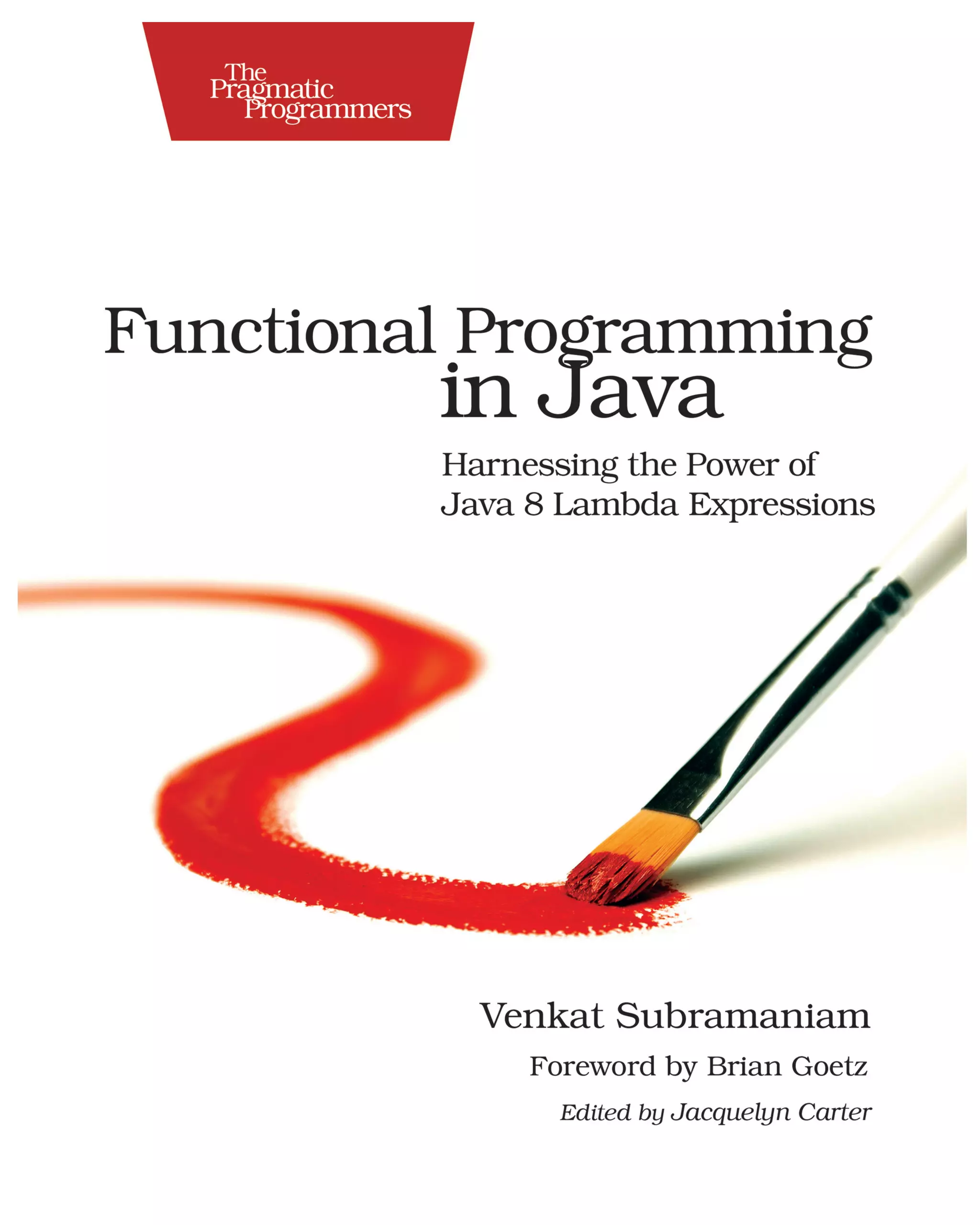
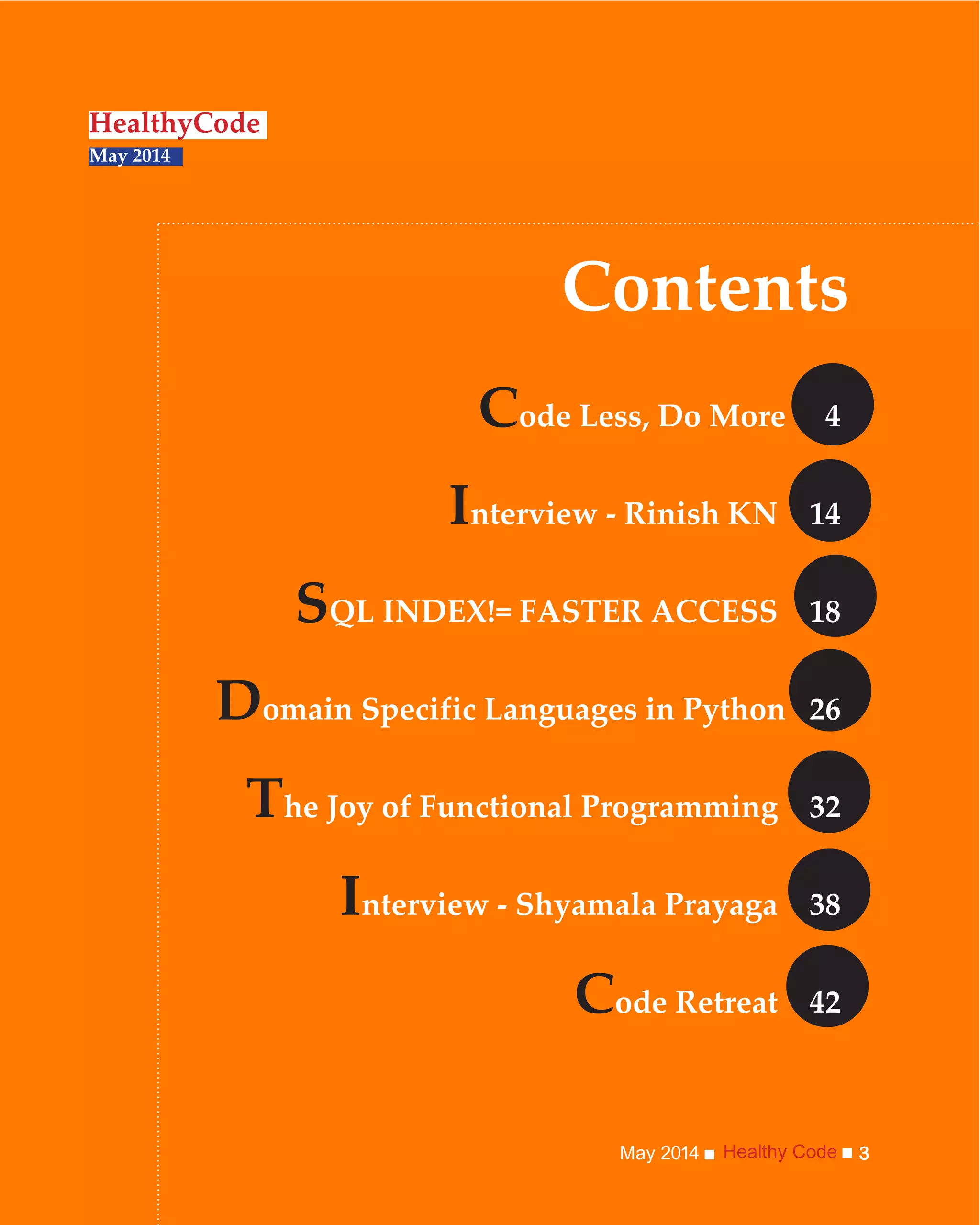
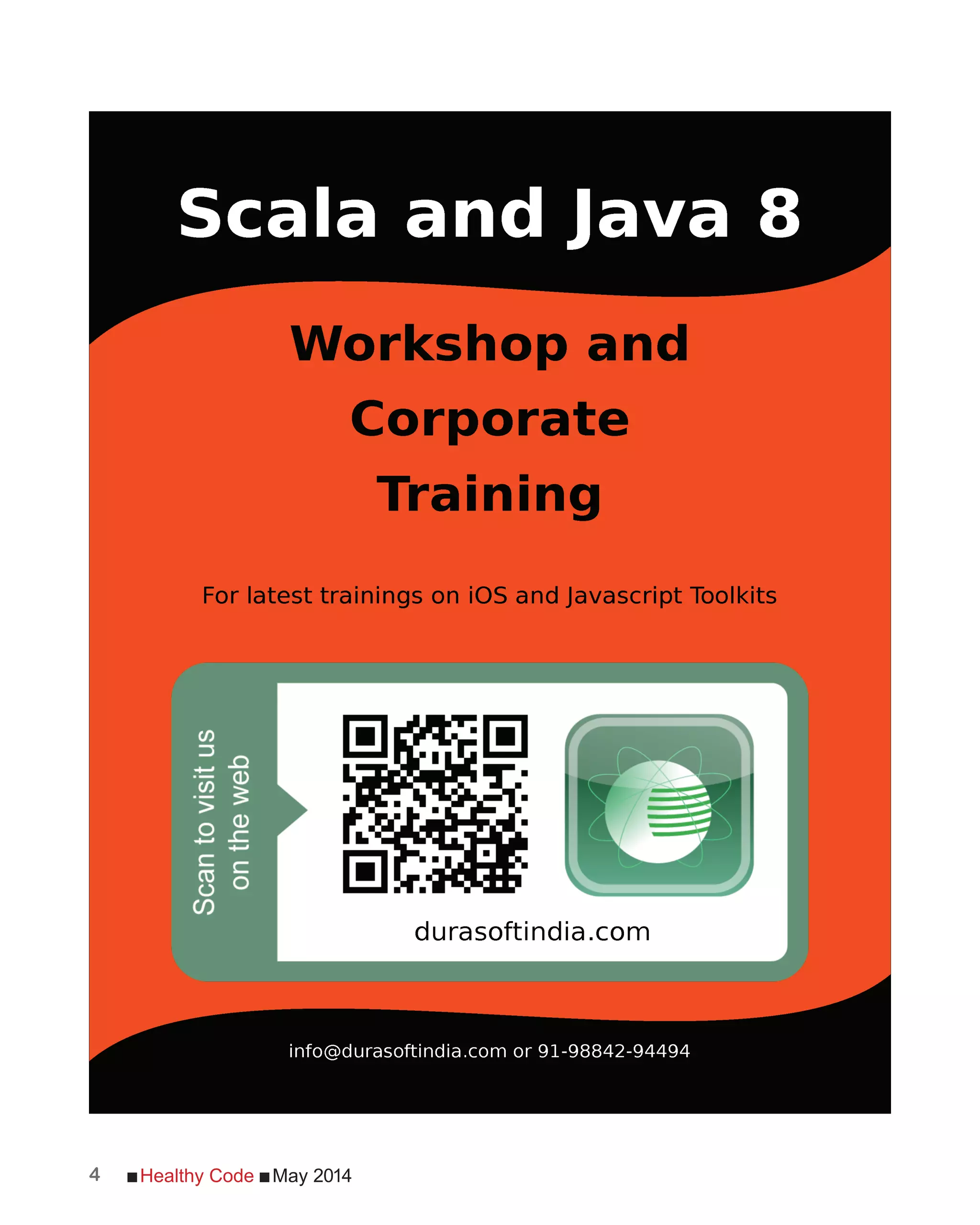
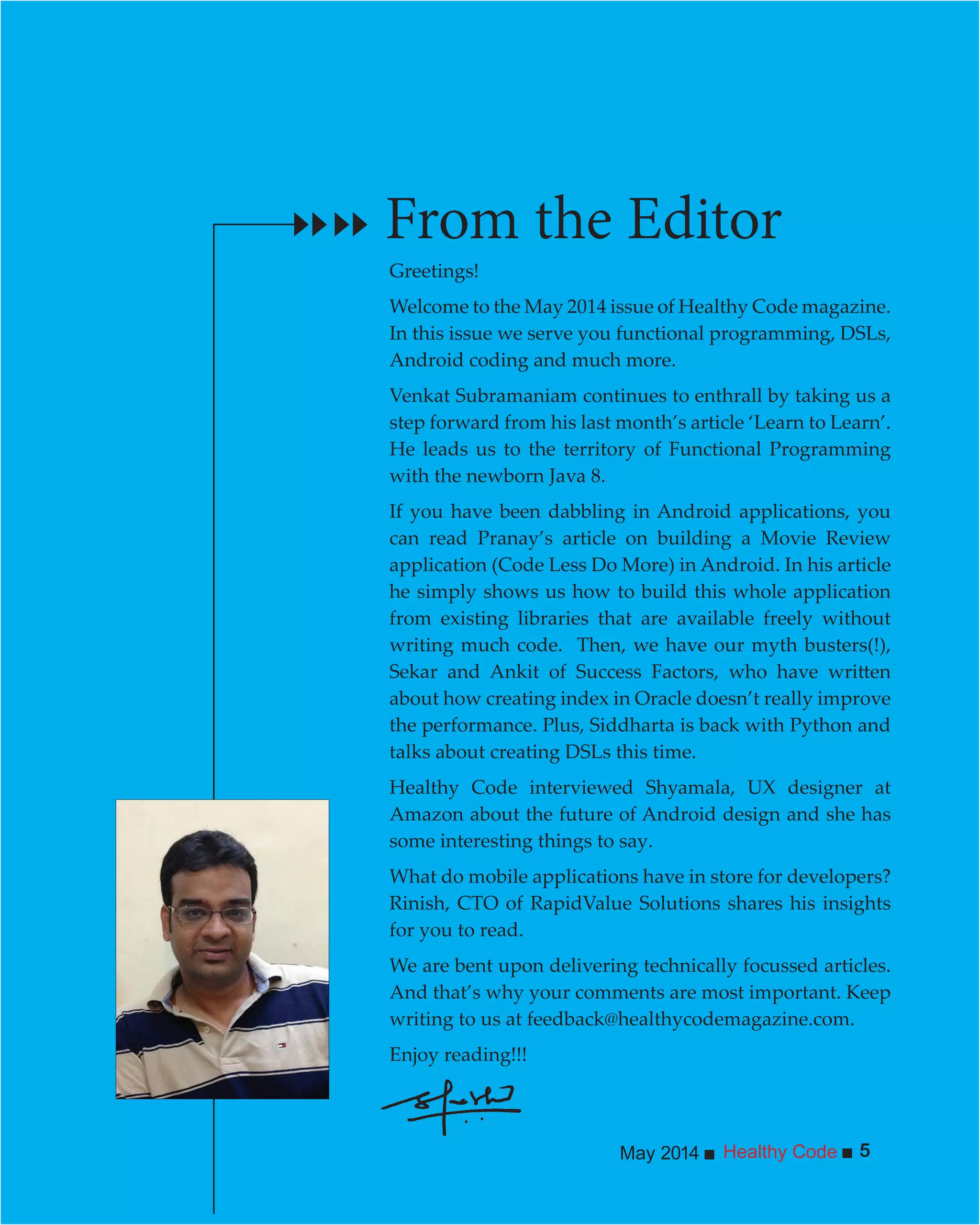
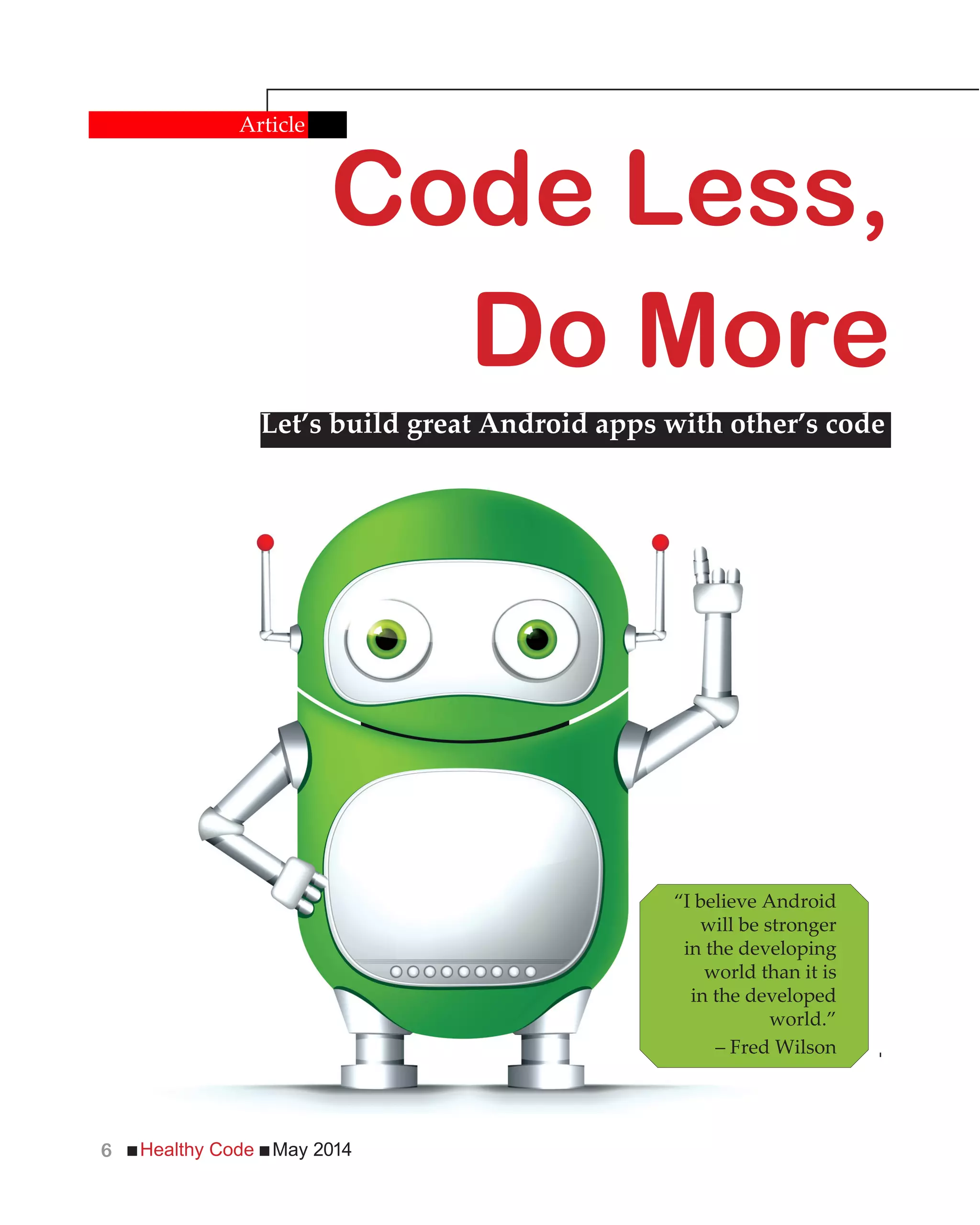
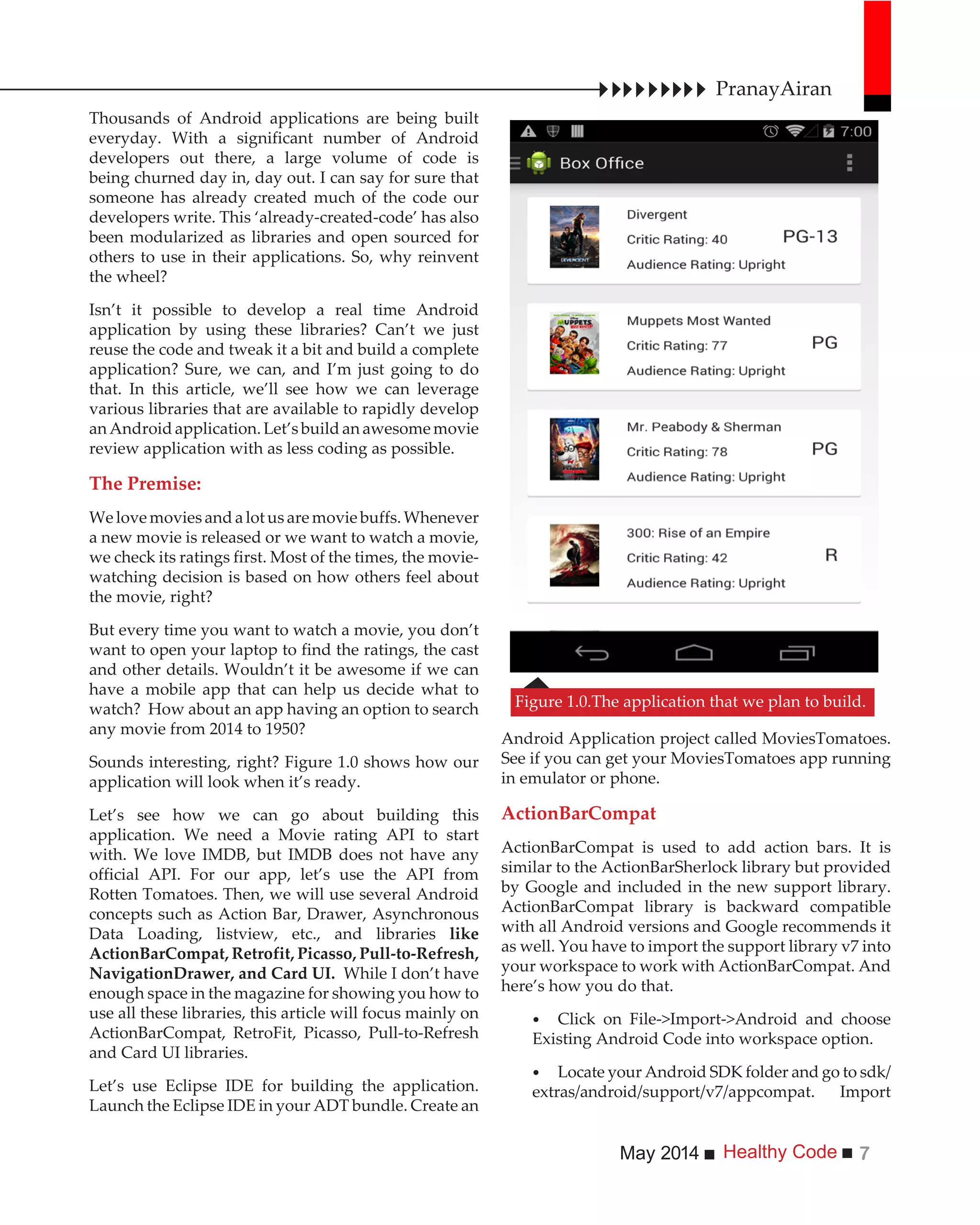
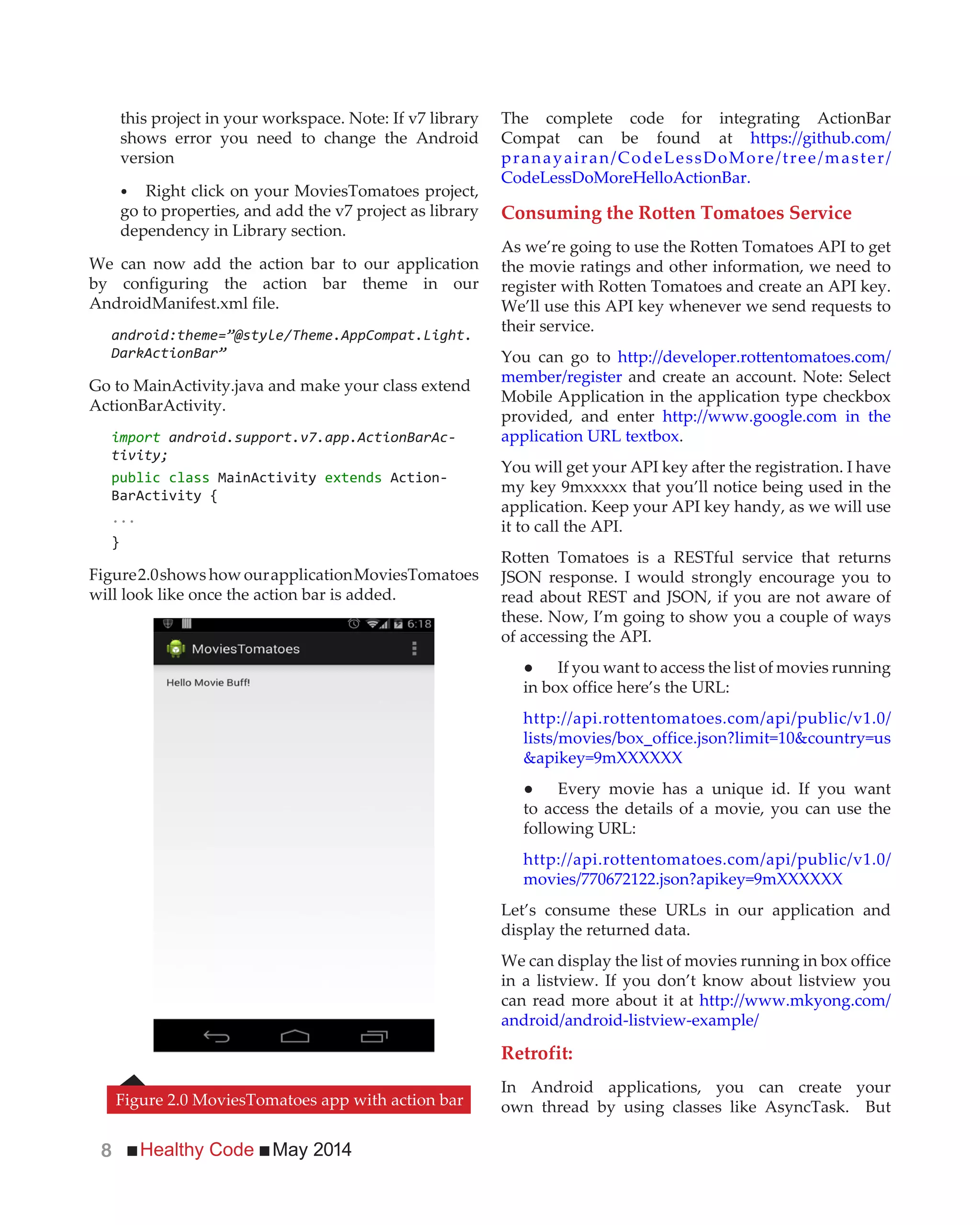
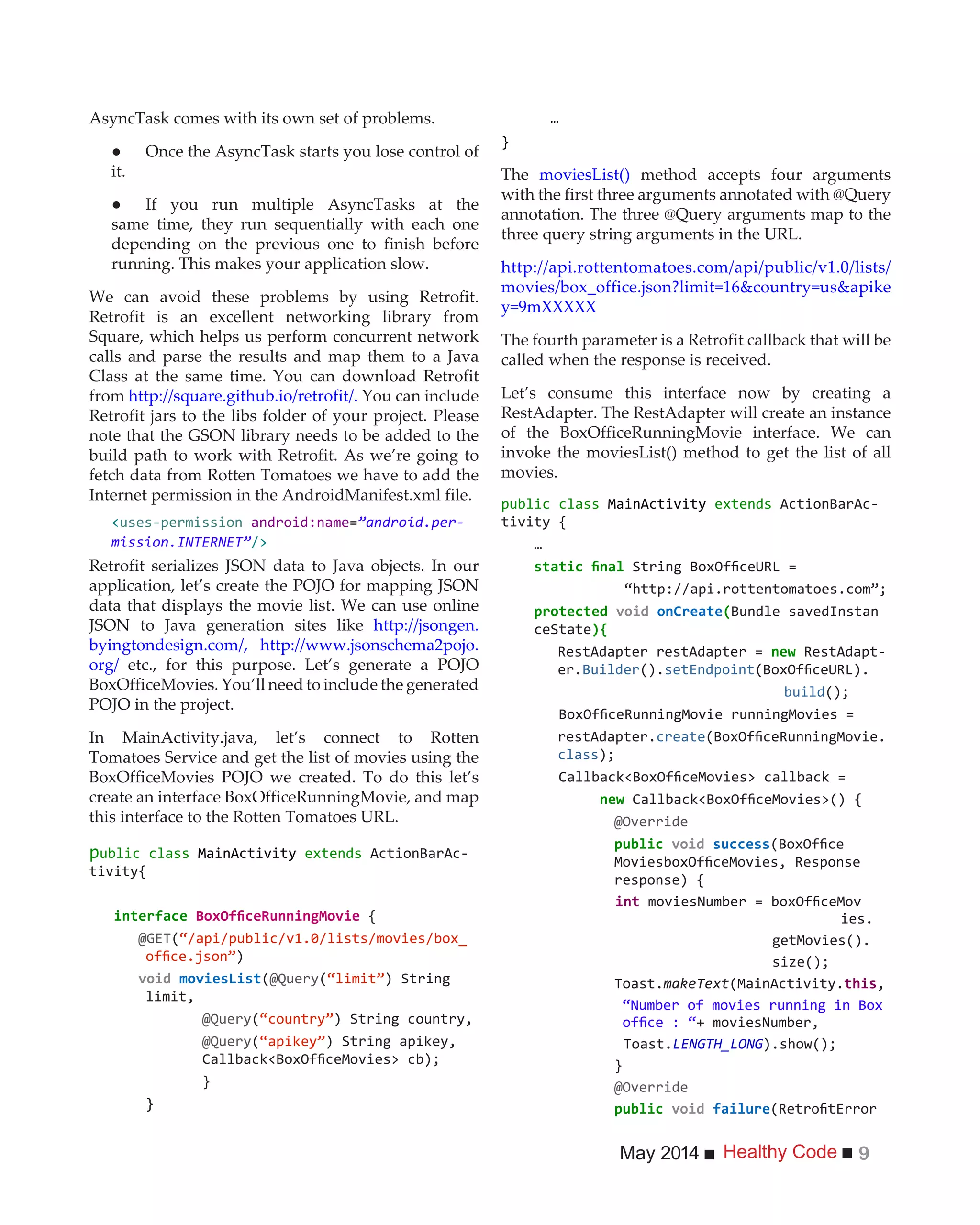

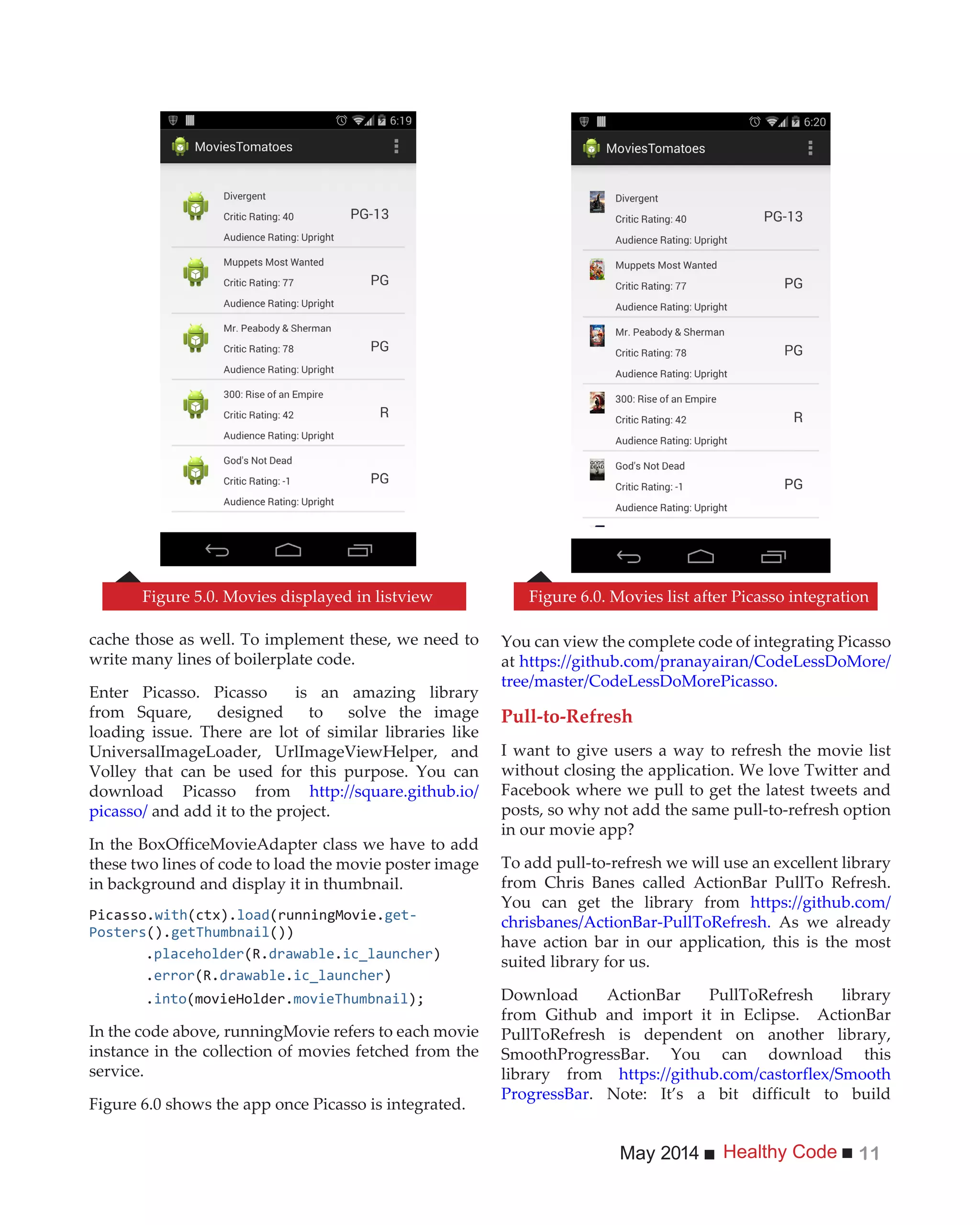
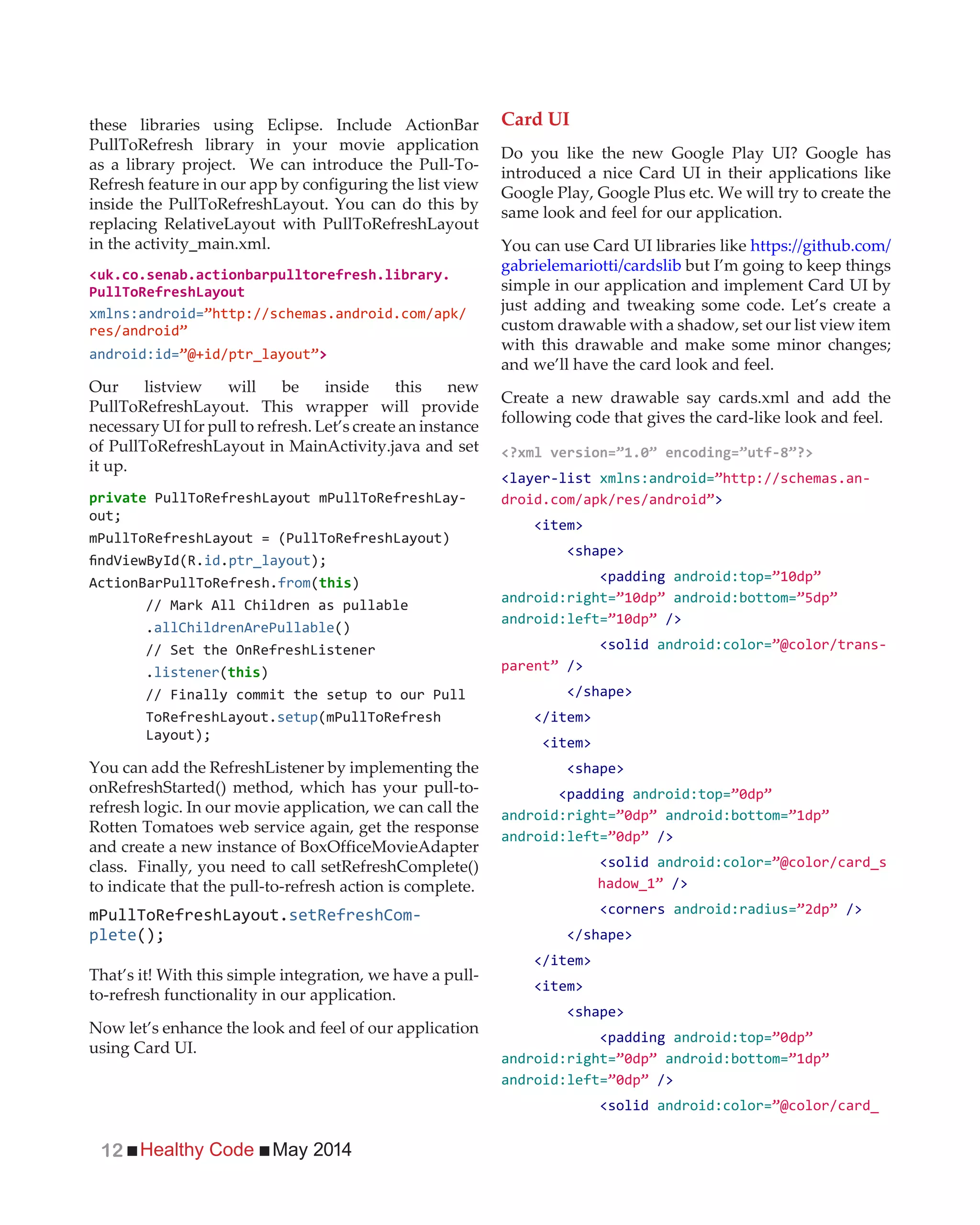
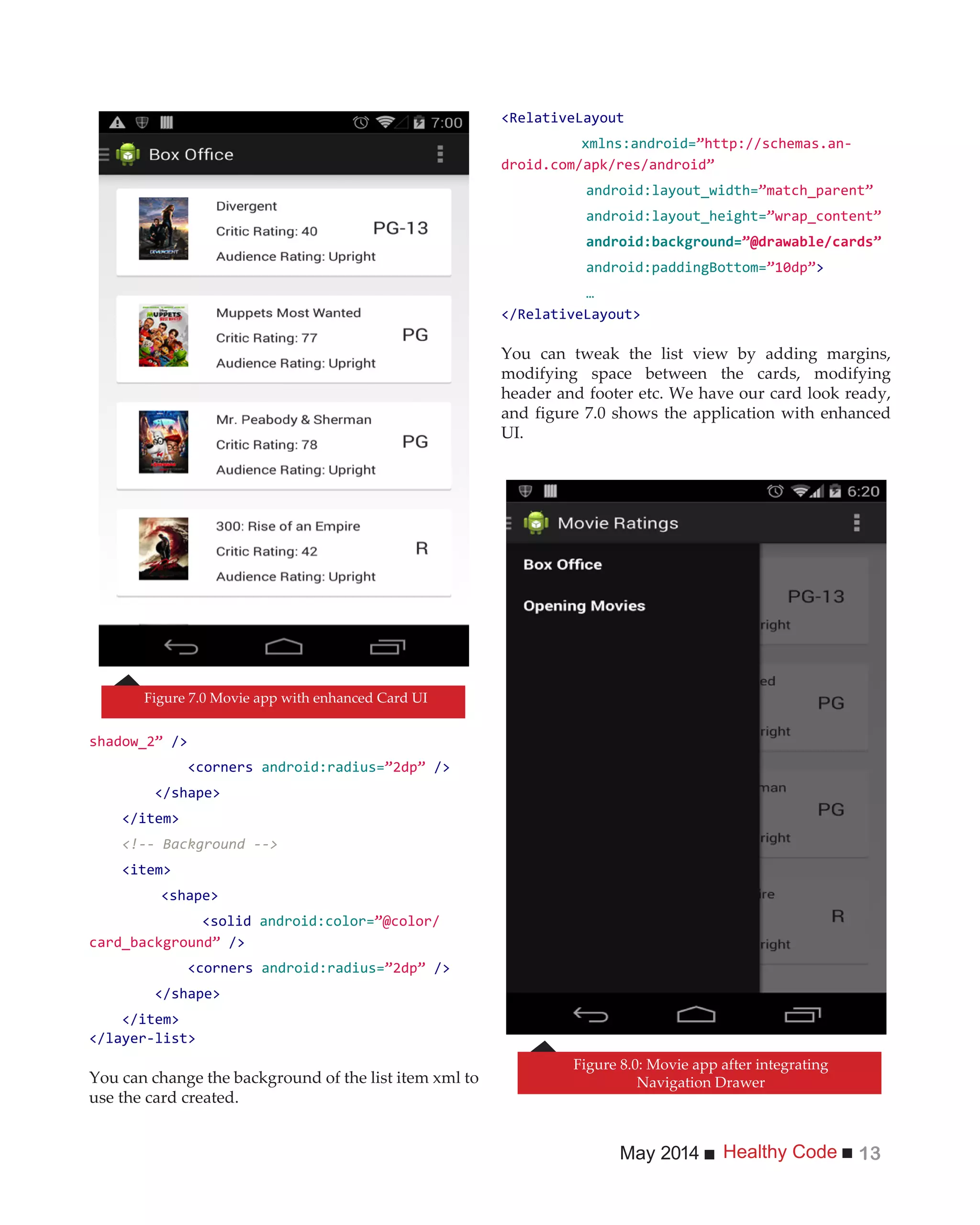

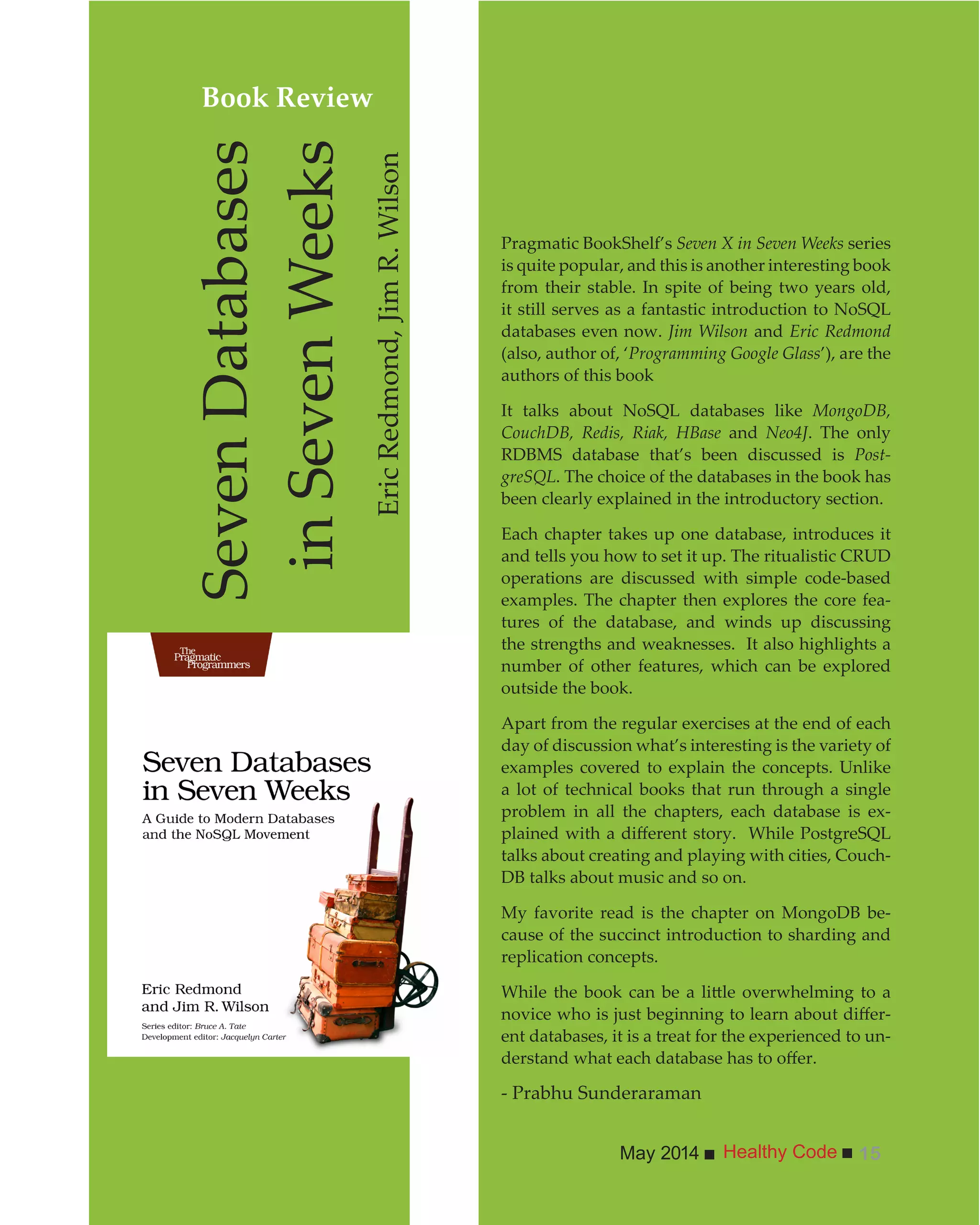
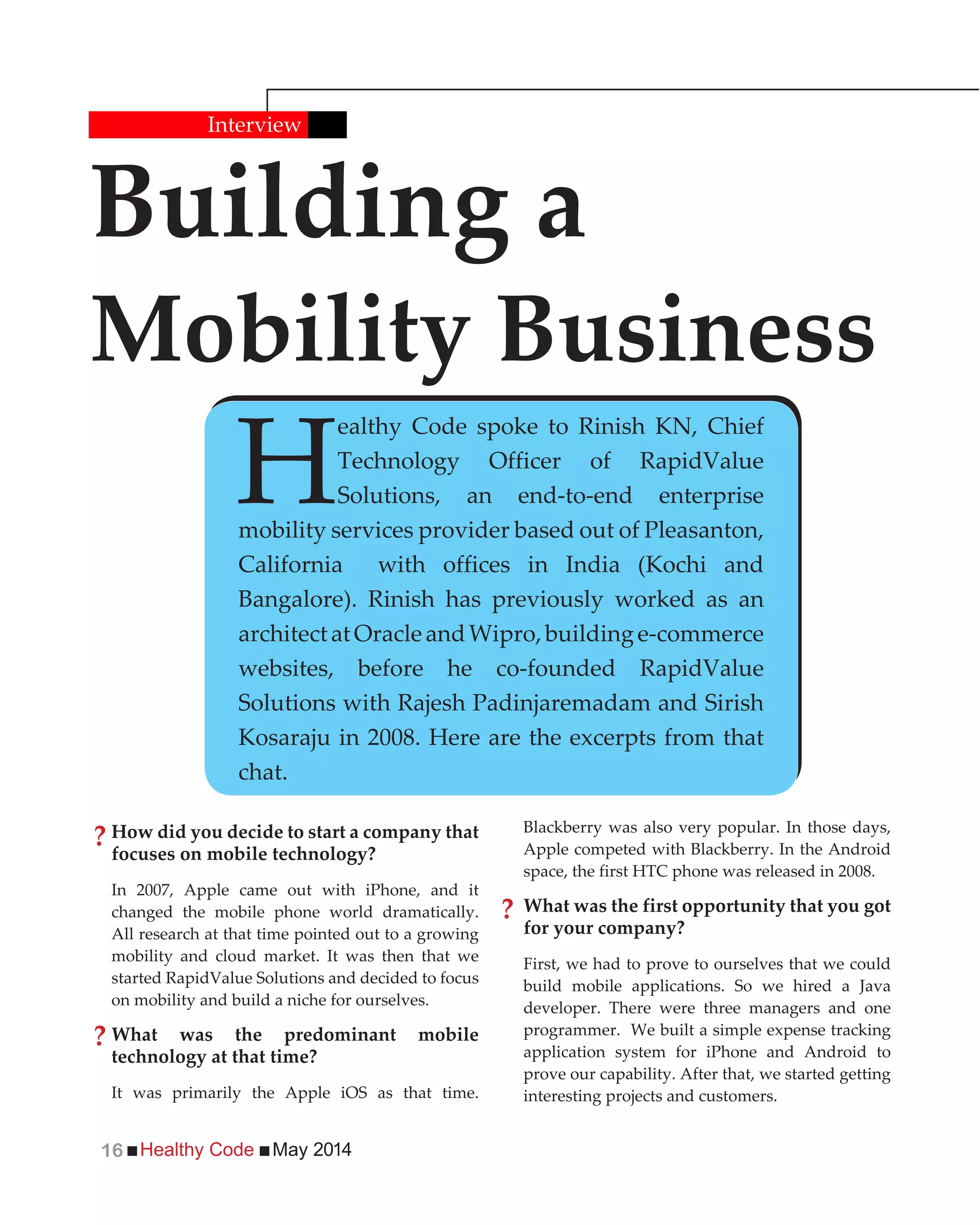
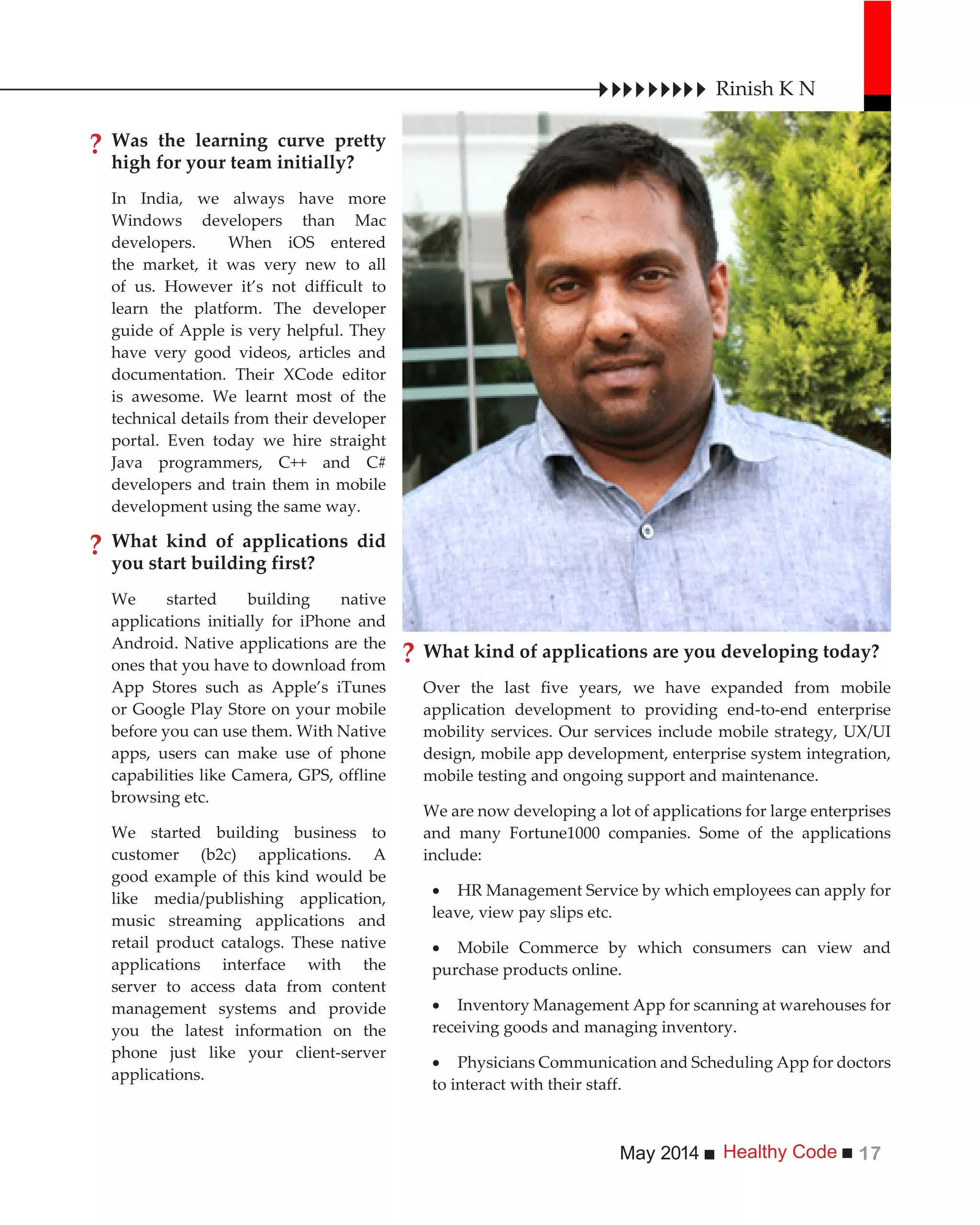

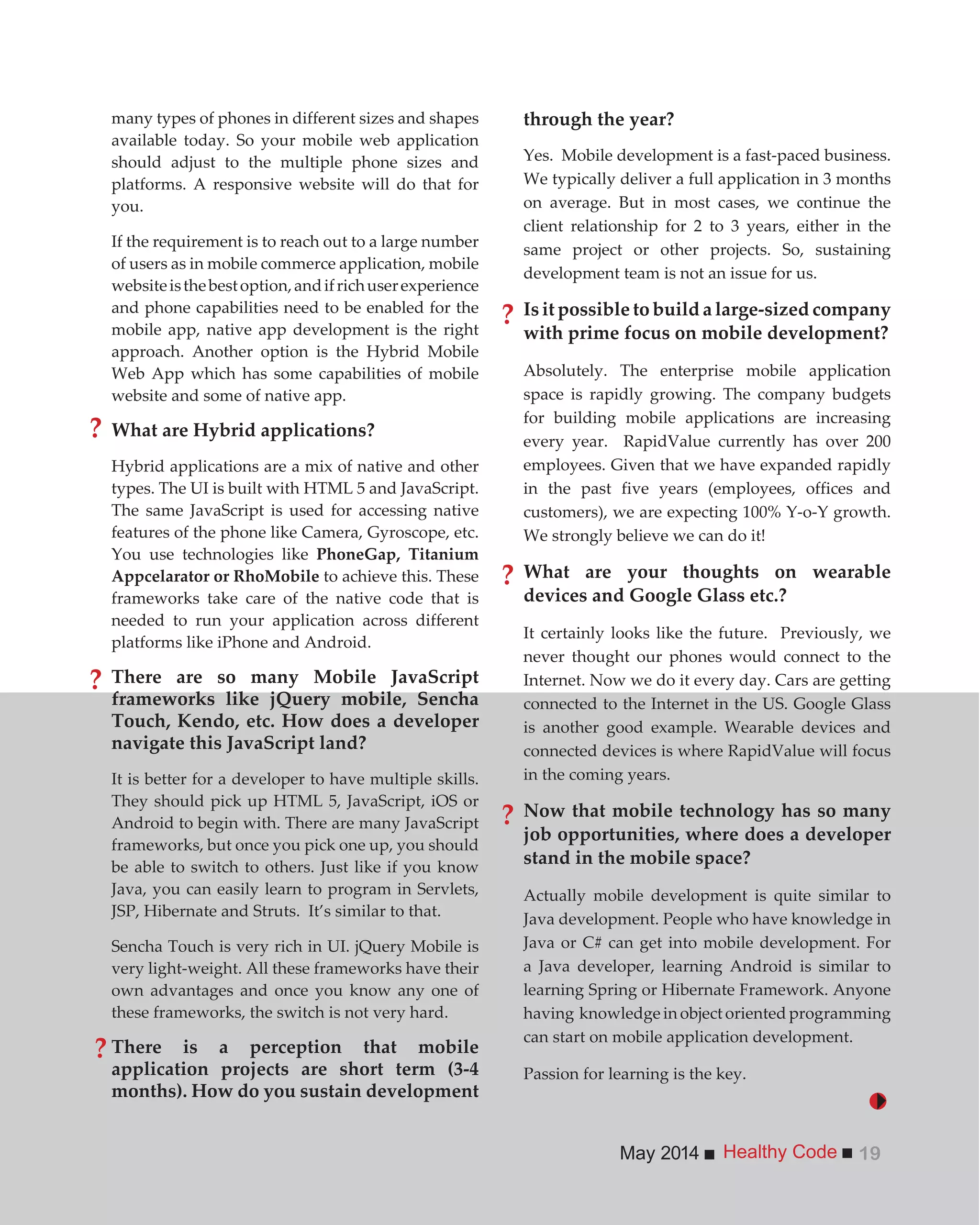

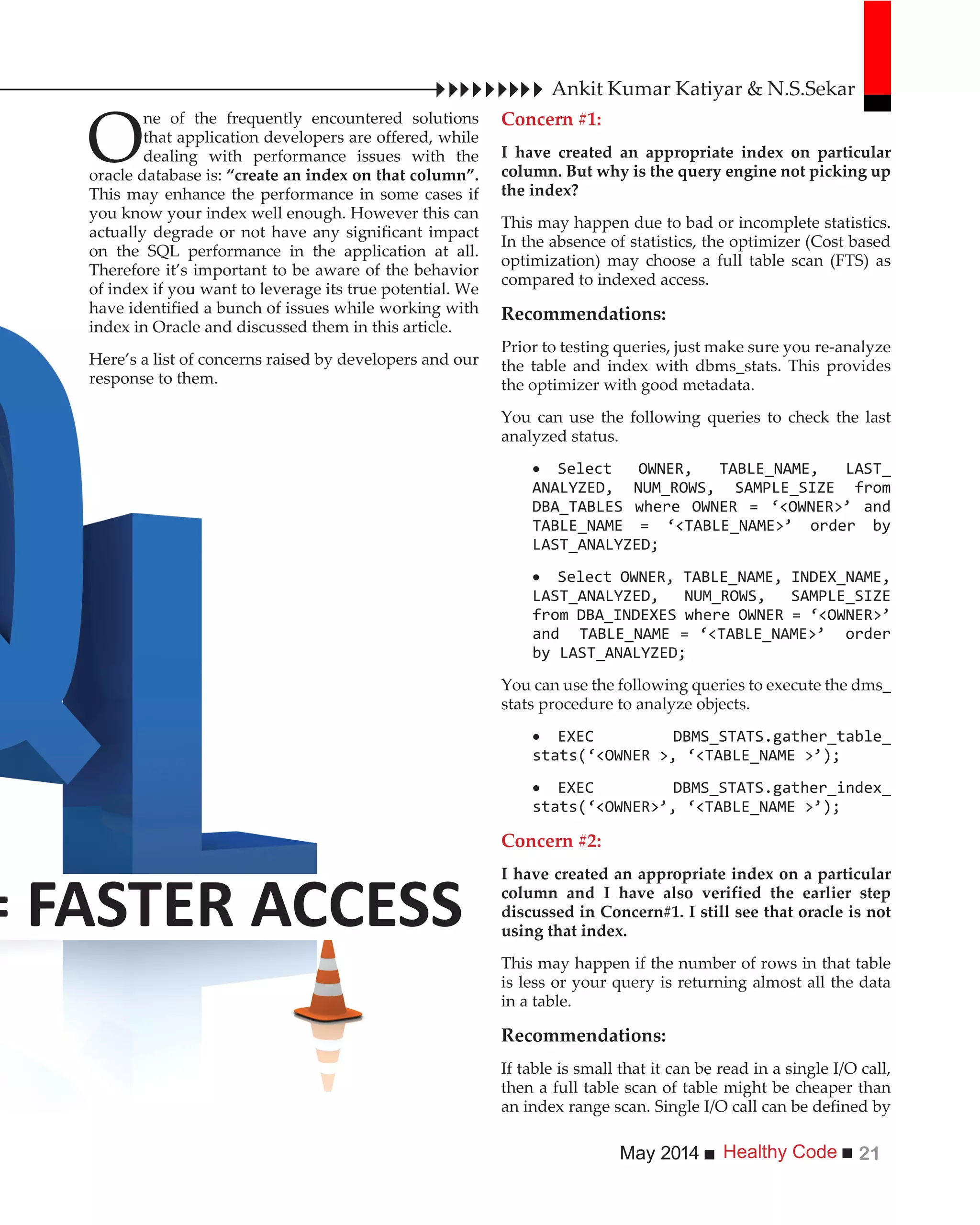
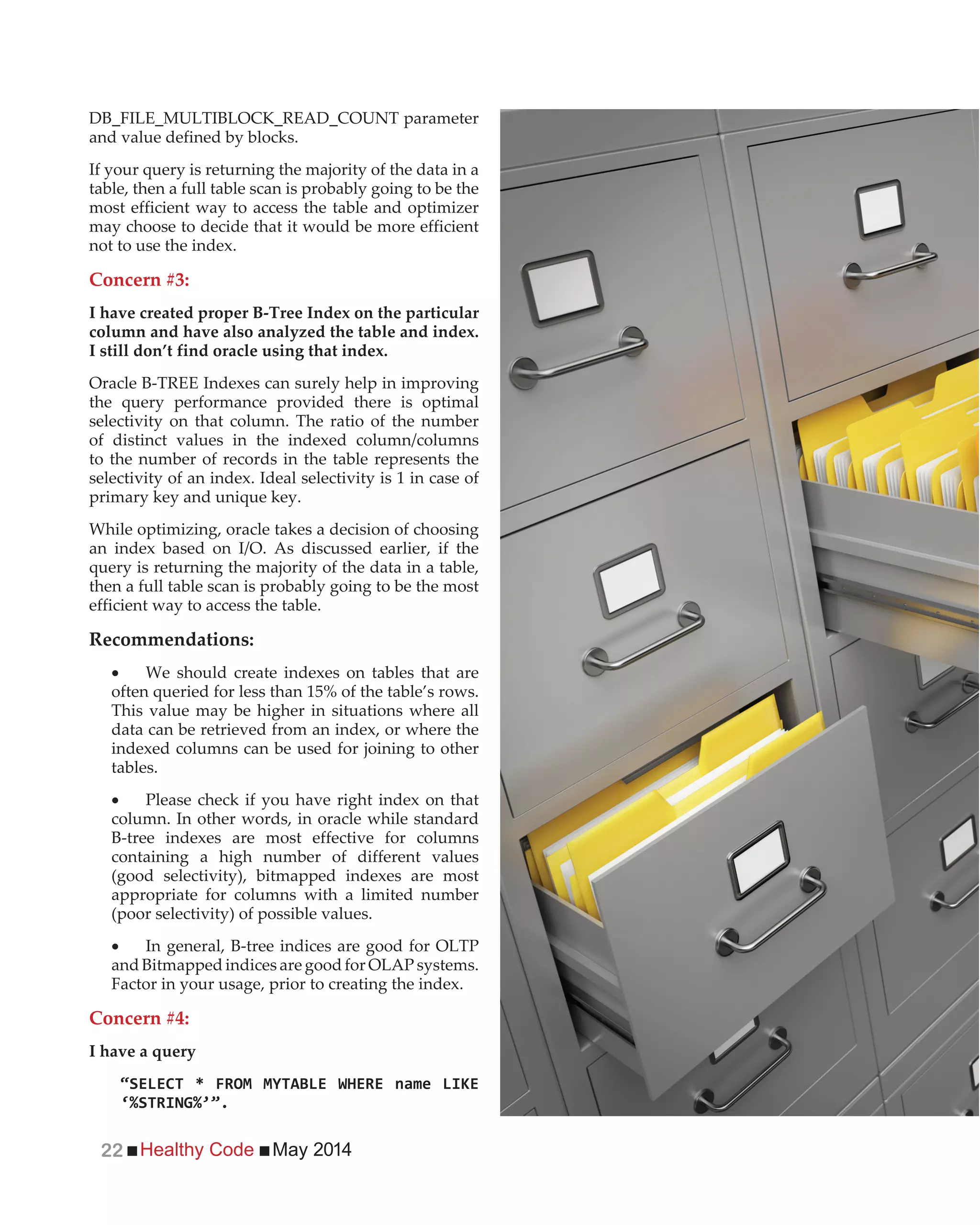
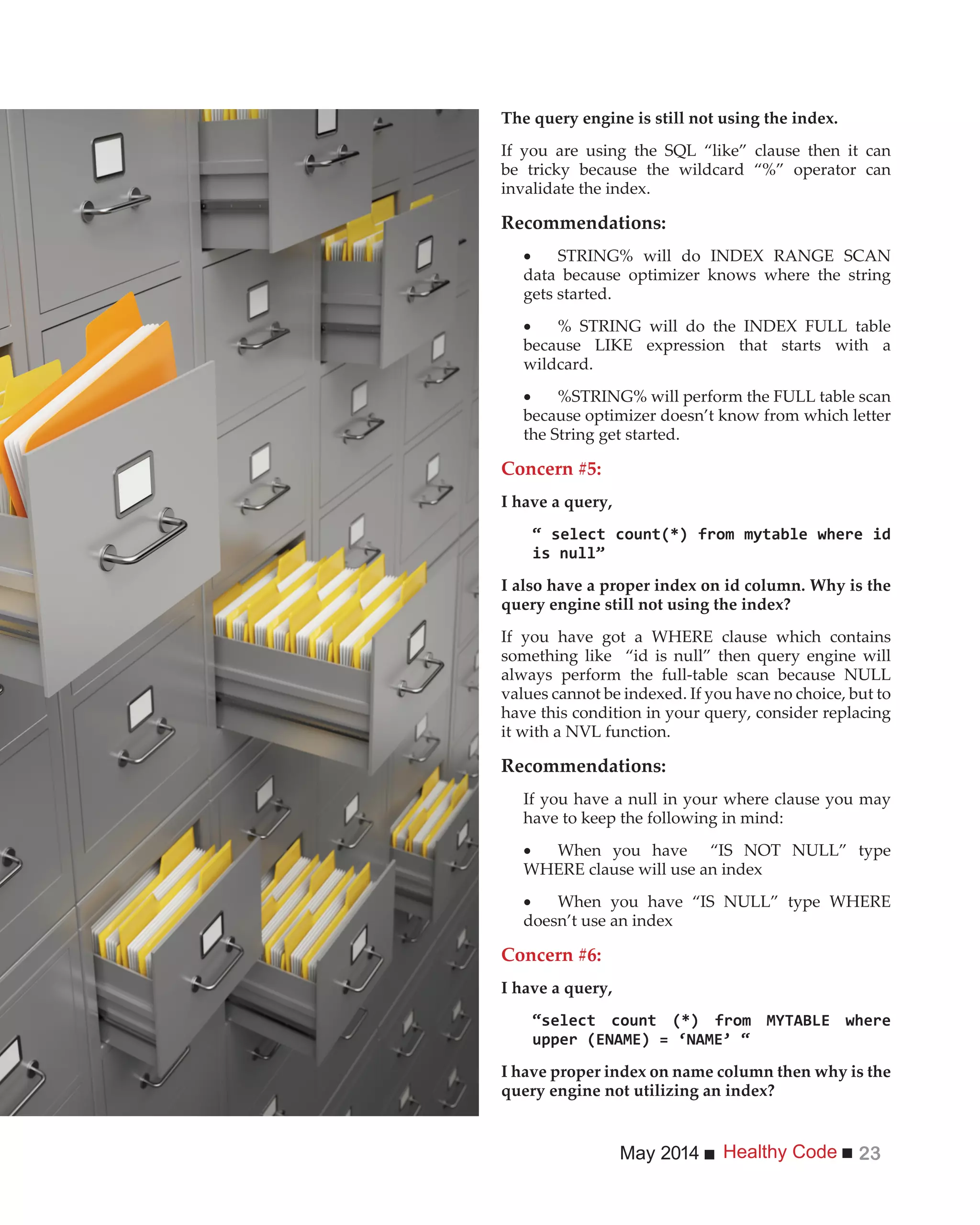
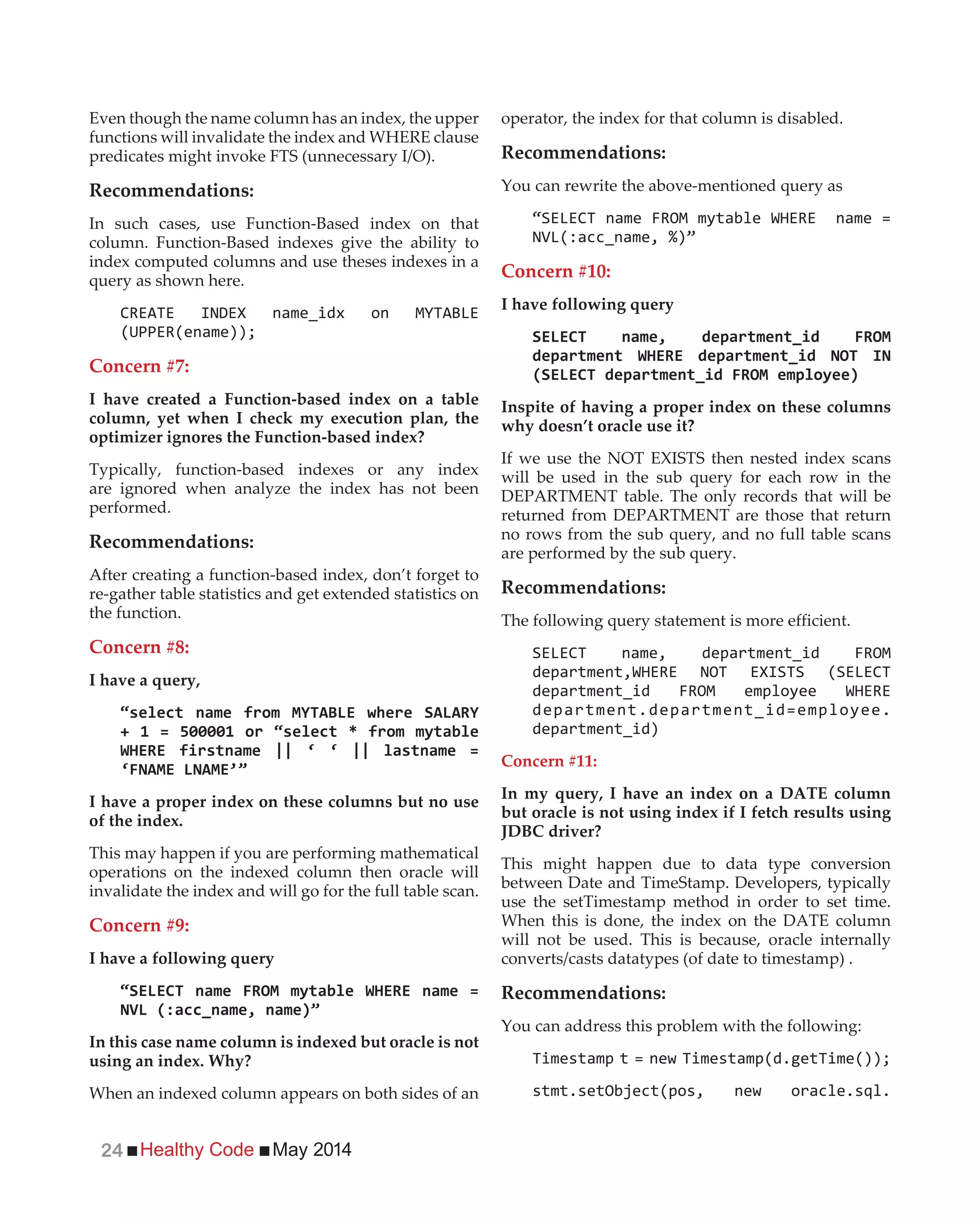


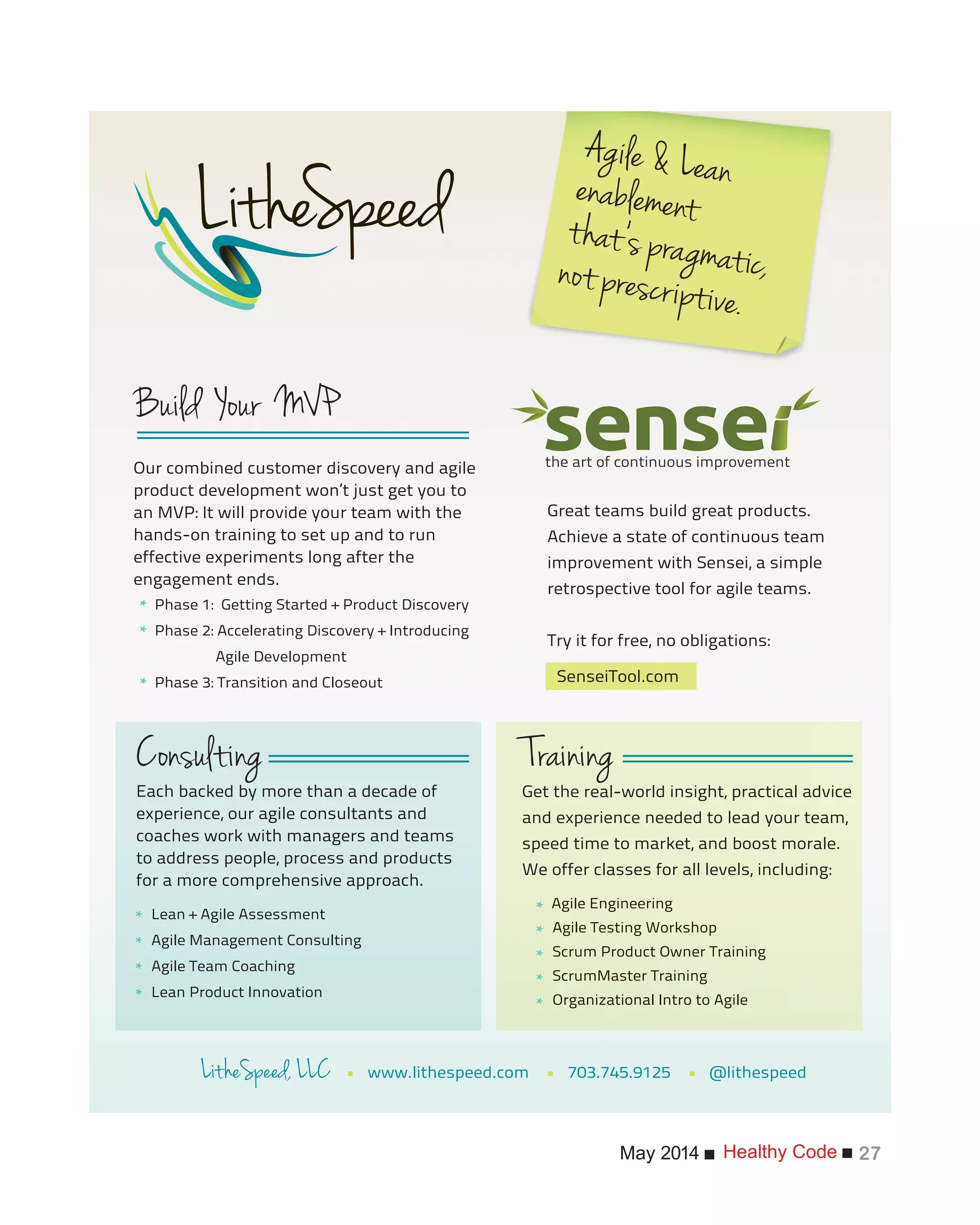
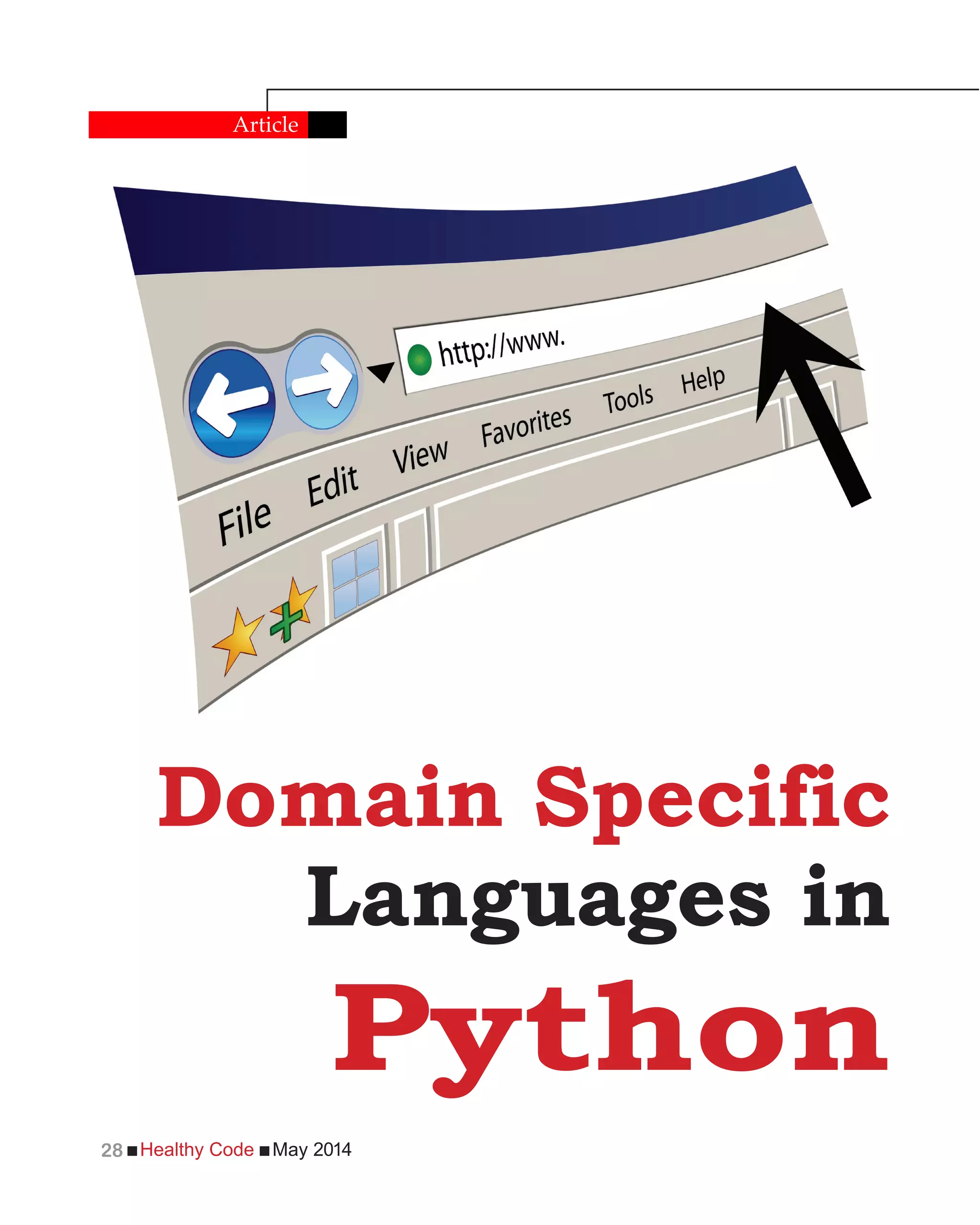
![Healthy CodeMay 2014 29
An interface should be designed in such a way that
the code, which a programmer writes, is almost same
as what he or she is thinking in their head. Such an
interface is termed as natural. With a natural interface,
there is less translation to do when converting from
the mental model to the actual code itself. This is
beneficial not only when writing code, but it is also
easier to understand the intent when reading the code
later on.
One way to create an interface that is as natural as
possible is via Domain Specific Languages (DSL).
Domain Specific Languages
Generally speaking, we use a general purpose
programming language to get our job done. However,
because they are a general purpose, we may
sometimes have to go through unnatural hoops to get
things done. Let us take a simple example of pattern
matching.
Suppose we want to determine if a given string
represents an IP address. The process of doing so
might involve taking the string, splitting it up on the
period, and then checking if there are exactly 4 parts,
and whether each part is a number between 0 to 255.
A Python implementation might look like this:
(ip_address):
components = ip_address_string.split( )
if len(components) != 4: False
:
int_components = [int(component) for
component in components]
except :
False
for component in int_components:
if component < or component > :
False
True
To someone looking at the code for the first time, it is
not obvious what pattern this code is matching. Also,
if we want to change the pattern that is being matched,
then it isn’t straightforward to make the change.
Using regular expressions, we can change the code to
something like this:
def is_ip(ip_address_string):
match = re.match(
,ip_address_string)
if not match: return False
for component in match.groups():
if int(component) > : return False
return True
In regular expression notation, the string “^(d{1,3}).
(d{1,3}).(d{1,3}).(d{1,3})$” amounts to matching
4 groups of digits, each group having 1-3 digits,
separated by periods.
Anyone can look at the regular expression and
understand the pattern that is being matched. If we
need to make a change to the pattern, then it is easy to
plug in the new pattern in the code.
Regular expressions are an example of a domain
specific language. It is a language that allows us to
express the pattern, rather than an implementation on
how to match the pattern. We are thinking in our head,
“I need to match four integers separated by a period,”
andtheregularexpressionallowsustoputthatdirectly
into the code. Without regular expressions, we need
to do a lot more work in translating our mental model
into the code when writing it, or understanding the
intent when reading the code, leading to unintuitive
or difficult to understand code.
There are many other DSLs that we use daily without
even realising it. For example, SQL is a domain
specific language for retrieving data from a relational
data source. By using SQL we can communicate very
clearly about what data we want to retrieve rather
than specifying how the data should be retrieved.
Now that, I have opened the doors of DSL, let’s walk
through the features of DSLs.
External v/s Internal DSL
There are two types of DSLs: External and Internal.
In an external DSL, a special syntax is used as a
language. This syntax is specified as a string or in an
external file. The regular expression interface that we
saw above is an example of an external DSL.
Internal DSLs don’t use an external syntax. Instead,
they make use of the syntactical features of the
programming language cleverly to make the interface
more natural.
Let’s discuss this External and Internal DSLs with an
example. To begin with, let us decide the public API
that we are going to use to make the calculations.
Siddharta Govindaraj](https://image.slidesharecdn.com/63345c2f-f4db-4a65-9cde-0ed30b0c5f1f-160223043102/75/HealthyCodeMay2014-29-2048.jpg)
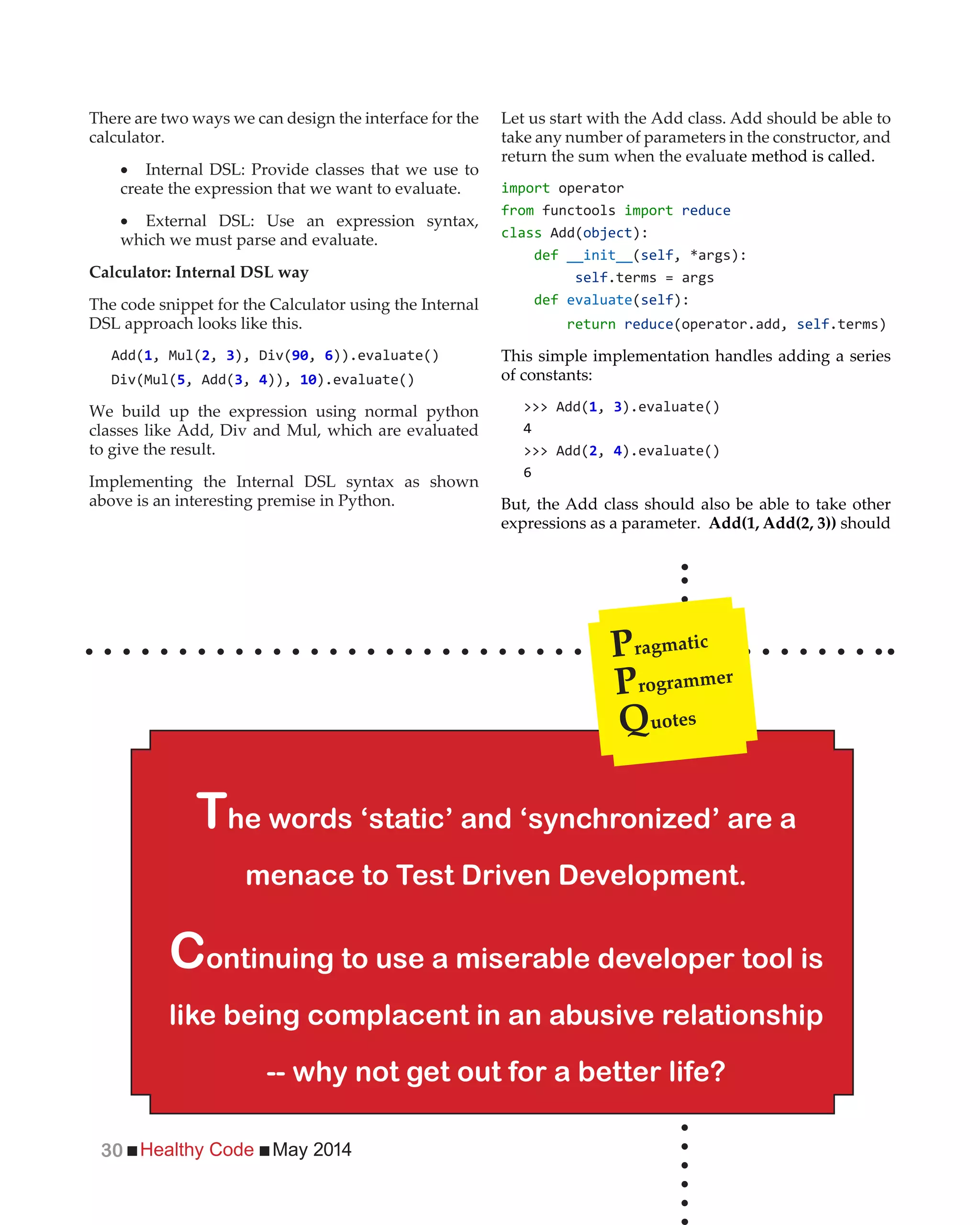
![Healthy CodeMay 2014 31
also return 6. Our current implementation will give
an error because in the evaluate method we assume
all the terms are numbers.
There are two ways to handle this. One way is to
check for expressions and call evaluate on the sub-
expression before adding. Such an implementation
will look like this:
(self):
total =
for term in self.terms:
if isinstance(term, Add):
total += term.evaluate()
:
total += term
total
The other option is to create a Number class with an
evaluate method. A number will always evaluate to
this example.
( ):
(self, value):
self.value = value
(self):
self.value
With this class in place, we can modify the Add class
to evaluate each expression before adding the values.
( ):
(self):
reduce(operator.add, [term
evaluate() for term in self.terms])
Now we can add both numbers and sub-expressions.
When evaluate is called on a term, it will return the
number or evaluate a sub-expression, depending on
which object it is. Unfortunately, this change means
that we have to wrap numbers in the Number class
and we have to now invoke the Add class like this
>>> Add(Number( ), Number(2)).evaluate()
>>> Add(Number( ), Add(Number(2), Number(3))).
evaluate()
6
This syntax looks ugly, but we’ll get back to that
problem later. For now, we have support for sub-
expressions. Let’s go ahead and implement Sub, Mul
and Div.
( ):
(self
self.terms = args
(self):
reduce(operator.sub, [term.
evaluate() for term in self.terms])
( ):
(self
self.terms = args
(self):
reduce(operator.mul, [term.
evaluate() for term in self.terms])
( ):
(self
self.terms = args
(self):
reduce(operator.truediv, [term.
evaluate() for term in self.terms])
With these classes in place, we can now start mixing
operators.
>>> Add(Number( ), Mul(Number(2), Number(3)),
), Number(6)))
Okay, now that the basic functionality is working, let
us clean it up a bit. First, there is that annoying need to
wrap up numbers in the Number class, which makes
the interface quite ugly and verbose. Second, there is
a fair bit of duplication between the various classes.
it accepts numbers and internally wraps them in the
Number class.
import
( ):
(self
self.terms = [self.wrap_term(term)
for term in args]
(self, term):
Number(term) if isinstance(term,
term
To clean up the duplication, we create a base Operation
class and put all the common functionality in there.
After the change, the code looks like this:](https://image.slidesharecdn.com/63345c2f-f4db-4a65-9cde-0ed30b0c5f1f-160223043102/75/HealthyCodeMay2014-31-2048.jpg)
![Healthy Code May 201432
Operation( ):
(self
self.terms = [self.wrap_term(term) for
term in args]
(self, term):
Number(term) if isinstance(term,
term
(self):
reduce(self.operation, [term.
evaluate() for term in self.terms])
(Operation):
operation = operator.add
(Operation):
operation = operator.sub
(Operation):
operation = operator.mul
(Operation):
operation = operator.truediv
We can now use the module in a more natural way!
>>> Add( , Mul(2, 3 , 6)).evaluate()
, Add(3, 4)), ).evaluate()
>>> Add( , 3)).evaluate()
Calculator: External DSL way
calculator.evaluate(“ + 2 3 + / 6 )
calculator.evaluate(“ 3 + 4 ) / )
In the External DSL approach, we pass the input as a
parse and evaluate. We will reserve the external DSL
implementation for later article.
External and Internal DSLs.
In short, if the main users for your package are going
to be other developers (for example, if you are creating
a module that will be used like a library with other
modules), then it is worthwhile to see if the language
contains a natural syntax that you could adapt into
an Internal DSL. Otherwise, go for an external DSL
interface.
The complete code of the article can be downloaded
from
2014
External DSL Internal DSL
Can use the most natural syntax Syntax limited by syntax of programming language
Easy to understand the intent Easy, but less than an external DSL
Can be maintained by non-programmers Cannot be maintained by non-programmers
Requires that you implement parsing logic No parsing required
Siddharta Govindaraj is the founder
of Silver Stripe Software, a product
company based in Chennai. He is
active in the Chennai tech, agile and
entrepreneur communities in his free
time.
Siddharta](https://image.slidesharecdn.com/63345c2f-f4db-4a65-9cde-0ed30b0c5f1f-160223043102/75/HealthyCodeMay2014-32-2048.jpg)

